

Ben Zachariah
Video: Off-road battle for Beer O’Clock Hill has automakers scrambling
6 Hours Ago
Time to put these dual-cab utes to the test off-road, with a series of easily replicated systems tests. We aren't trying to break them.

Senior Contributor
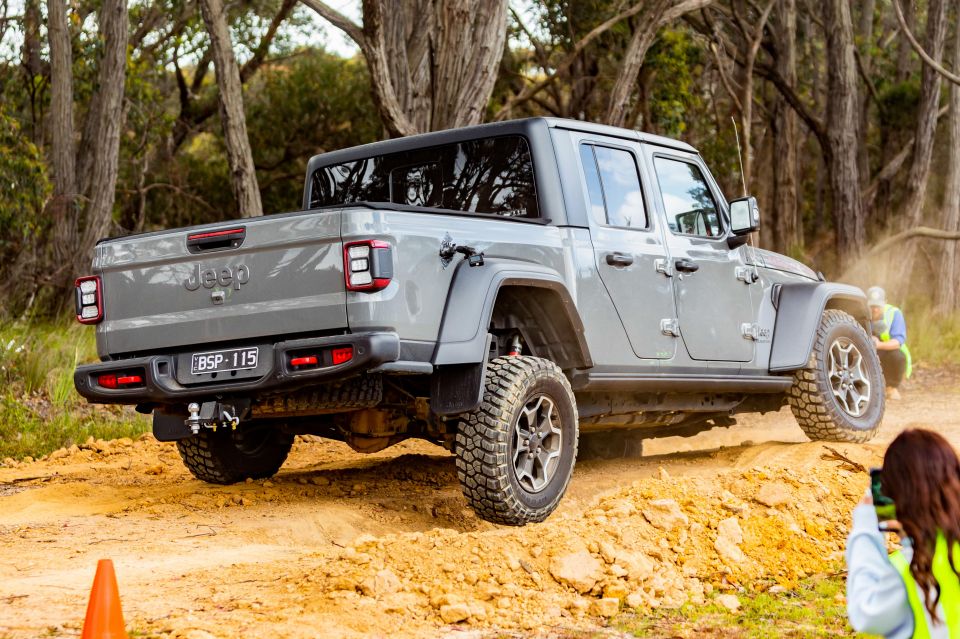

Senior Contributor
In this section of our comprehensive 4×4 ute megatest, we take a dozen of Australia’s top-selling dual-cabs over some off-road challenges.
Our location is the Australian Automotive Research Centre (AARC) in regional Victoria (near Anglesea), which offers the right degree of consistency.
Now, we will note off the top that our focus here is on light-difficulty off-roading, reflective of what many owners will be doing. That’s because we want to test the respective 4×4 systems and traction controls, not hit their breaking point. That’s also why each ute is running stock tyres and recommended pressures.
At heart, this content is not so much aimed at hardcore 4×4 enthusiasts, but rather at seeing how good the utes are at navigating obstacles with as few human interventions as possible, taking into account someone with less experience off the beaten path.
We went with placarded tyre pressures and OEM tyres, to be representative of what you’d get from the dealer. If you are a regular off-roader, then consider the aftermarket for things like chunkier tyres, more underbody protection, and even potentially some suspension upgrades.
As with all the other ute megatest content, this written story is designed to support our detailed video hosted by Paul Maric, which is embedded above. It’s time-stamped with chapters for each model tested. We recommend checking it out!
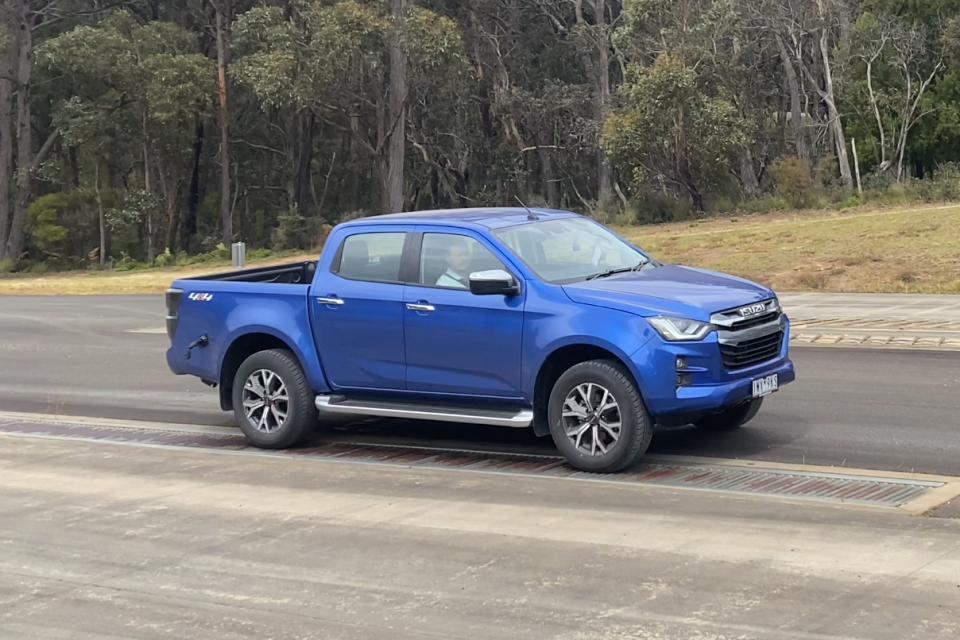
First test
The first test is pretty basic. There’s a strip of bitumen on a 10 per cent grade, but we drove the right-hand-side wheels of each ute onto a strip of slippery rolling metal tubes.
This simulates a variably slippery surface, and by removing grip from one side of the car, will ascertain the effectiveness of each car’s traction control – how quickly and efficiently it can redirect torque to the tyres with road contact/purchase.
We tested the vehicles in rear-wheel drive (2H) to establish a control, and then 4×4 (4-Auto in full-time 4×4 utes and 4-High in part-time 4×4 utes).
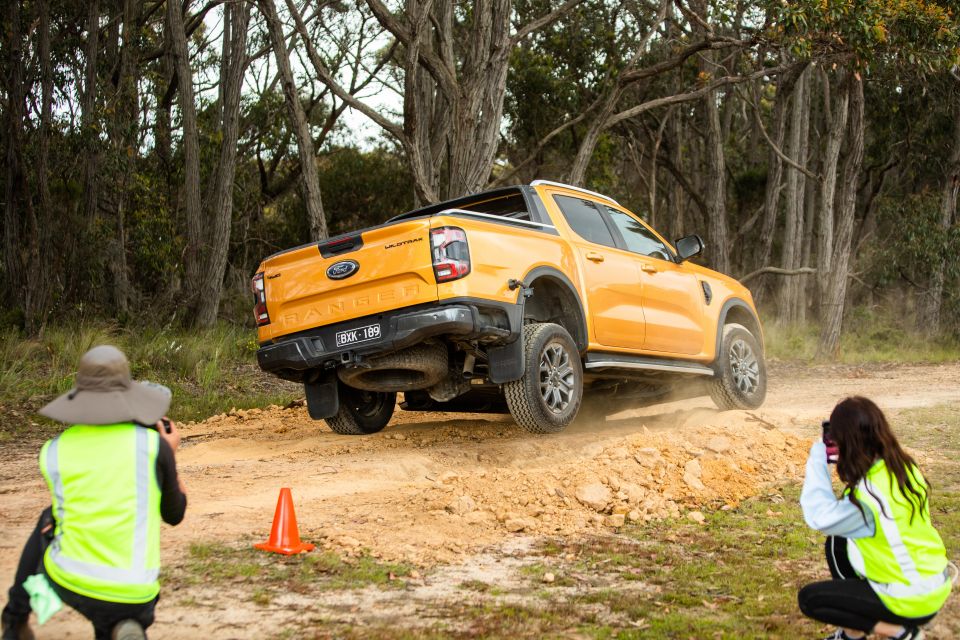
Second test
This test centres around offset sand moguls. Each ute is stopped with two tyres (diagonally opposed) airborne, and two planted.
The first test is to open the doors in this position to make sure there isn’t chassis flex happening. The second involves steadily pressing the accelerator and watching the time it takes to clamber out.
The purpose again is to watch how the 4×4 and traction control systems reallocate engine outputs to the tyres with road contact, rather than letting the airborne wheels spin uselessly.
Vehicles were driven in their 4-Auto or 4-High modes based on whether they were full-time or part-time 4x4s. We only engaged the manual diff lock when needed, on one vehicle, although two others had automated rear diff lockers, and another had a limited-slip setup.

Third test
We call this one gravel mountain. It’s a steep 45-degree incline covered in loose gravel and stone, which proved highly difficult to walk up, let alone drive.
Paul maintained constant throttle and only pressed harder if or when a vehicle began to battle.
We started at the bottom in each vehicle’s low-range (4-Low) gearing with rear diff locks engaged where possible. This differential lock allows both wheels on the axle to turn at the same speed, maximising surface purchase.
We then turned around and went down the same hill, to test the hill-descent control effectiveness, the low-range gearing, and the camera views where relevant.

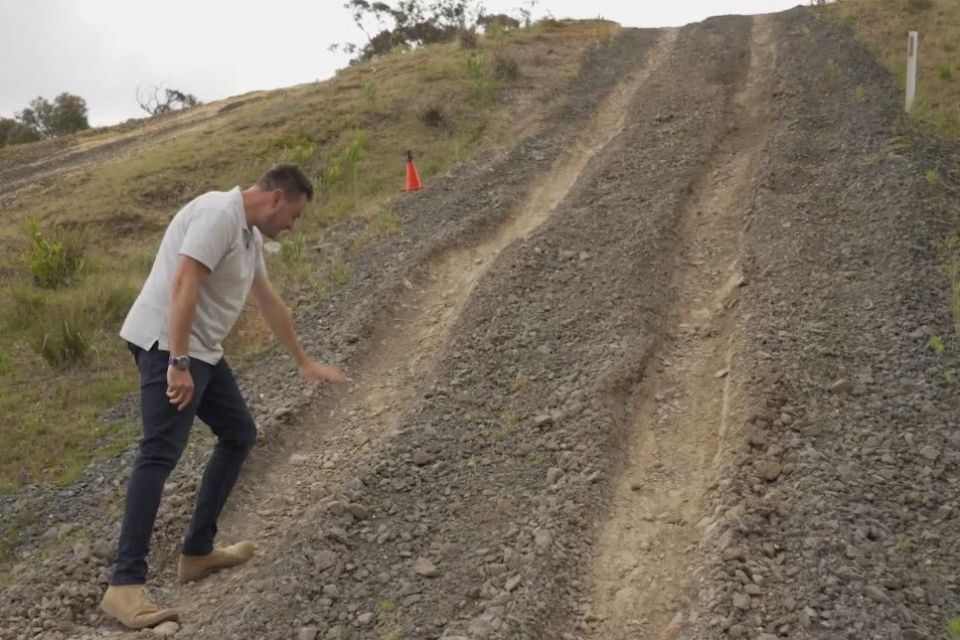

Jump straight to a particular ute by clicking these links, or scroll to read the full breakdown alphabetically. Watch the video above, even just for one car!
Chevrolet Silverado LTZ Premium Ford Ranger Raptor Ford Ranger Wildtrak GWM Ute Cannon-X Isuzu D-Max LS-U+ Jeep Gladiator Rubicon Mazda BT-50 SP Mitsubishi Triton GSR Nissan Navara Pro-4X Warrior Ram 1500 Laramie SsangYong Musso XLV Ultimate Toyota HiLux Rogue FINAL RESULTS
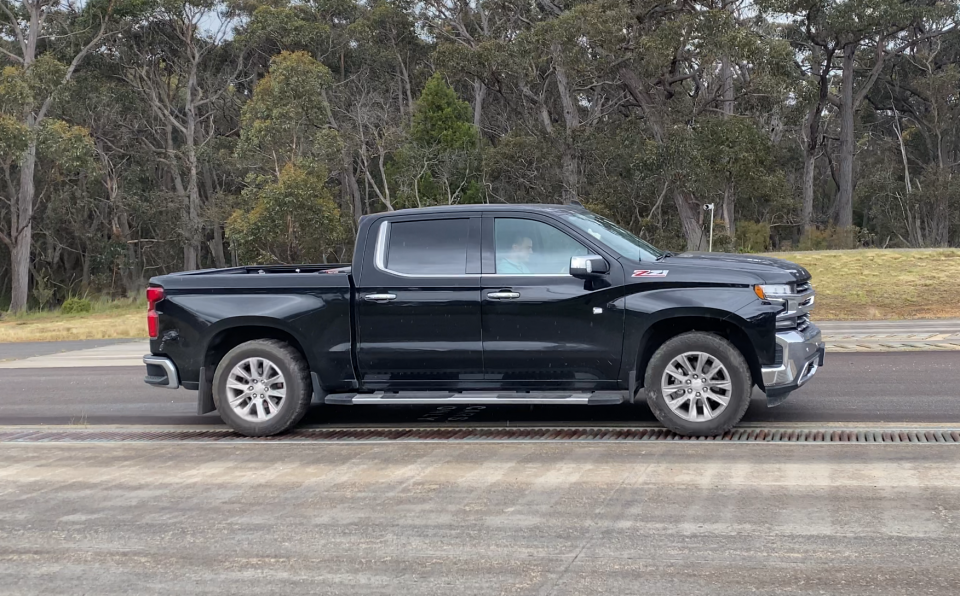
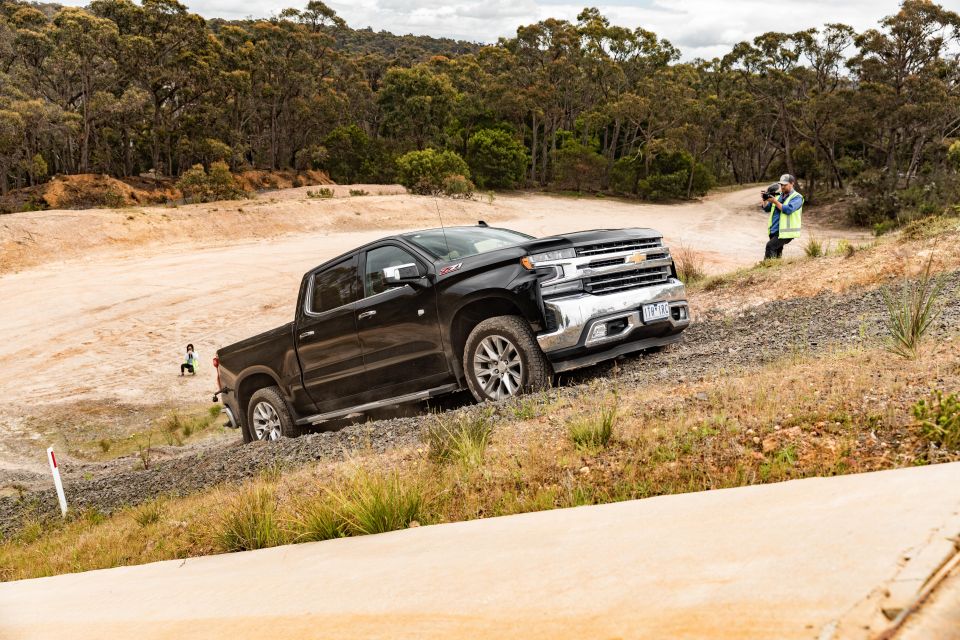

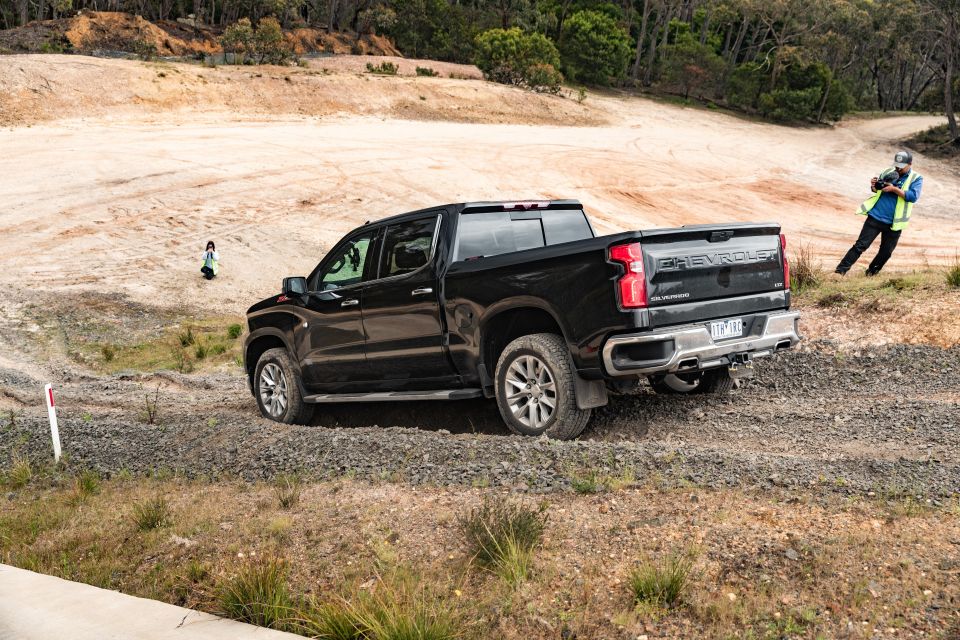
First cab off the rank is one of our big American pickups; the Chevy Silverado.
It handled the rollers easily, in large part due to its self-locking rear diff that snapped into action and shunted the vehicle forward, in both 2H and 4A driving setups.
Similarly to the rollers, once that rear diff grabbed the Silverado easily clambered out of the offset moguls, though its low side steps hit the ground.
Next we drove down to the bottom of the 45-degree Gravel Mountain and engaged low-range and the Off-Road mode. “If it makes it up here I will be very surprised,” guessed Paul in the video.
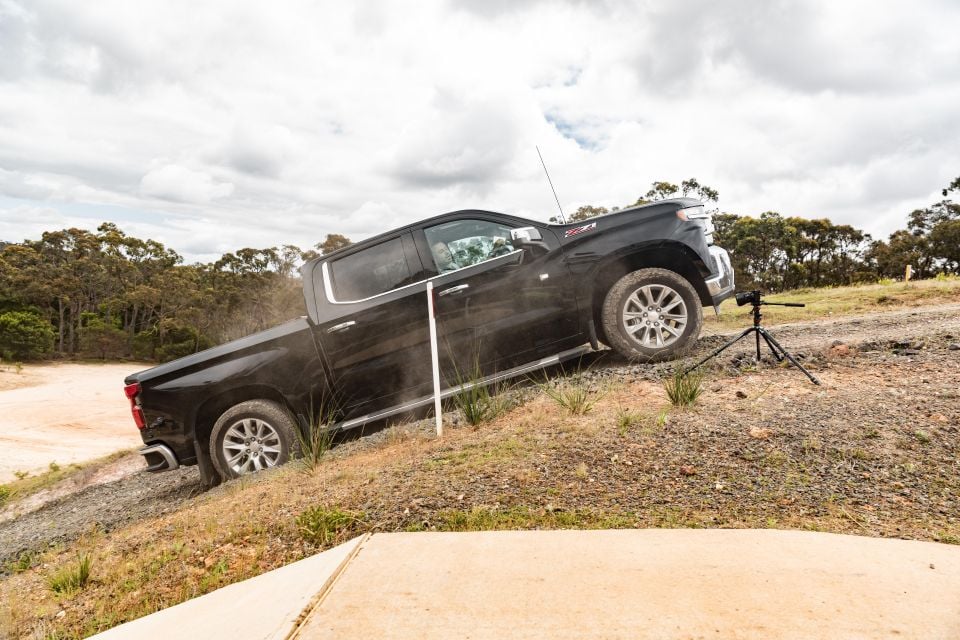
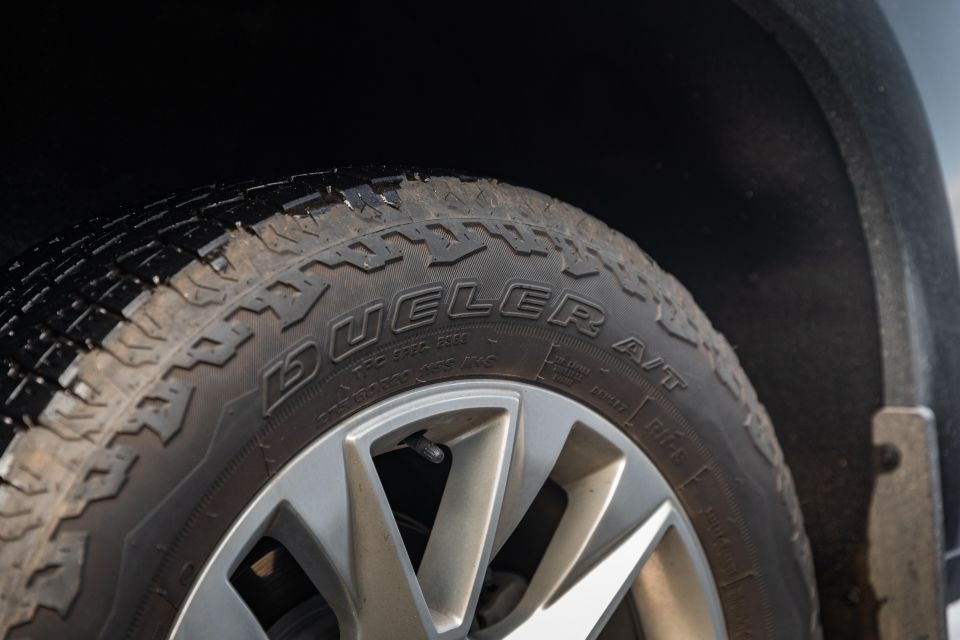
And surprised he was, because the big Chevy just walked up the unstable and steeper-than-it-looks trail without a fuss, helped no doubt by Bridgestone Dueler all-terrain tyres and vast reservoirs of low-down torque. Oh, and gargantuan mass pushing it firmly into the ground.
Going back down, we found the hill-descent system simple and easy to adjust, meaning you can whip your feet off the pedals and let the pickup slowly track down.
Not bad for something this massive, and this isn’t even the Trail Boss 4×4 edition.
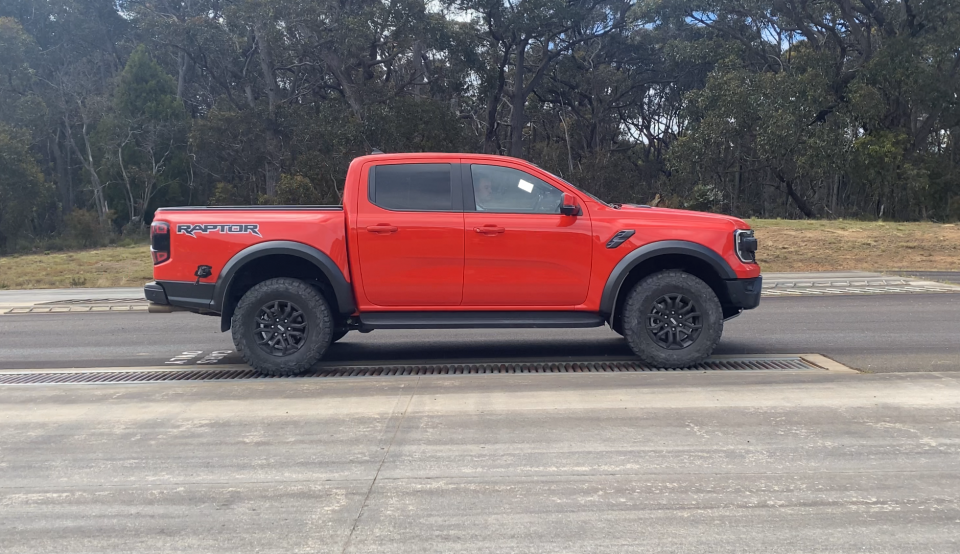
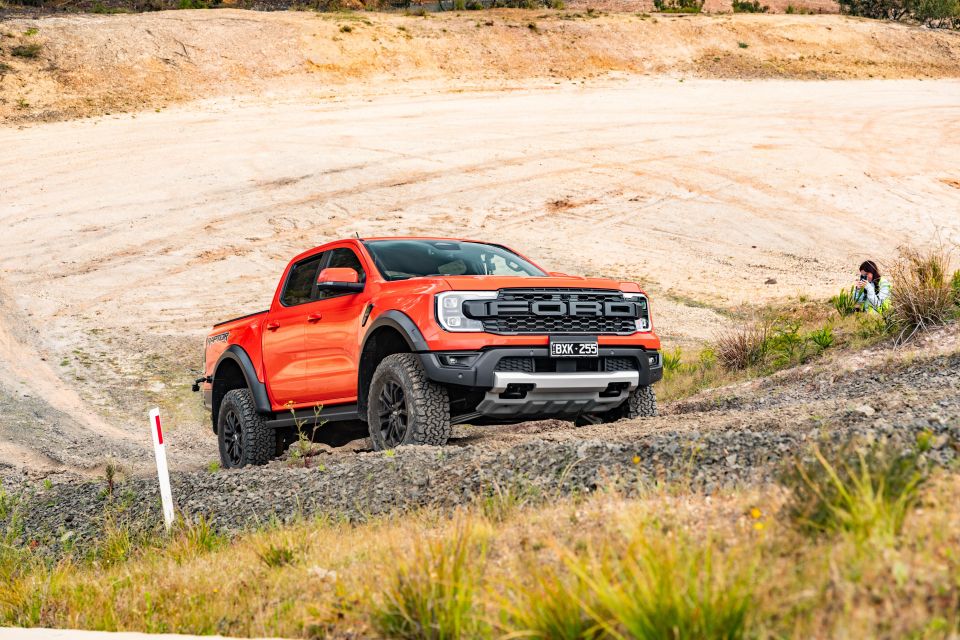
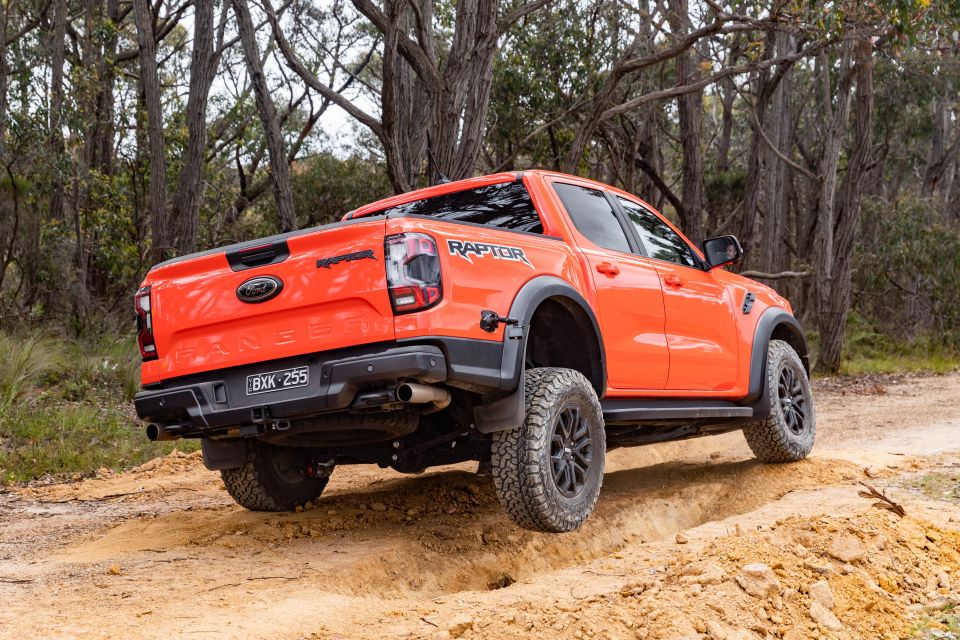
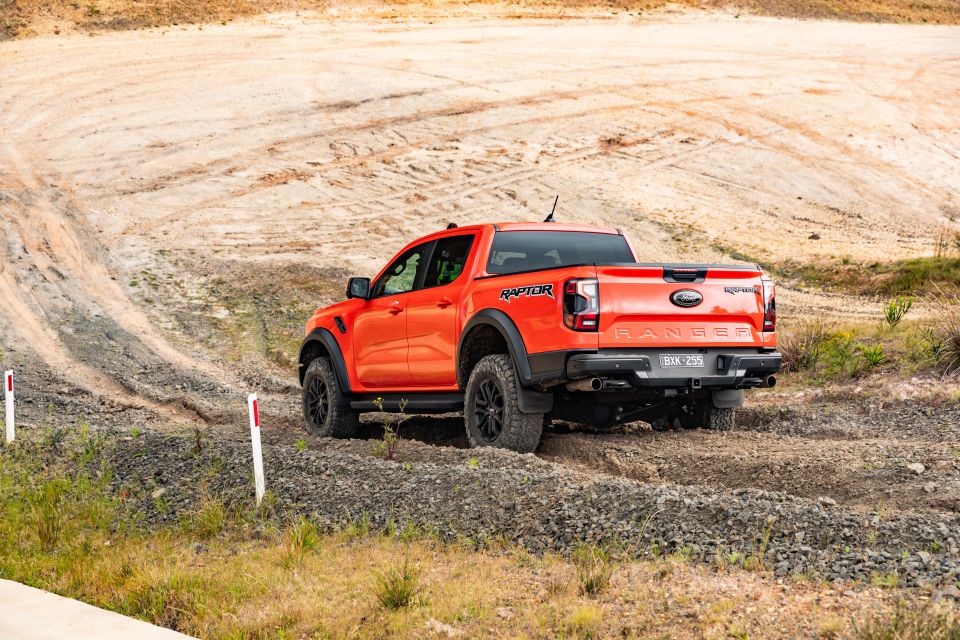
The Raptor was the first vehicle we ran across our set of tasks in the video, because we thought it should be a benchmark. We had very high hopes given this comes with off-road features such as BF Goodrich off-road tyres, double diff locks, and Fox racing shocks.
It passed the roller challenge without too much fuss, only rolling back momentarily before the traction control caught up and helped push the car forward, with a little more throttle.
It passed the flex test without a drama and it only took a few nudges of the accelerator to get it to squirm out of the offset ruts with diagonally opposed tyres making surface contact, in 4A variable 4WD mode.
Paul postulated while approaching the bottom of Gravel Mountain that ”if this doesn’t make it up then nothing will”. But then again, he does own a Raptor…

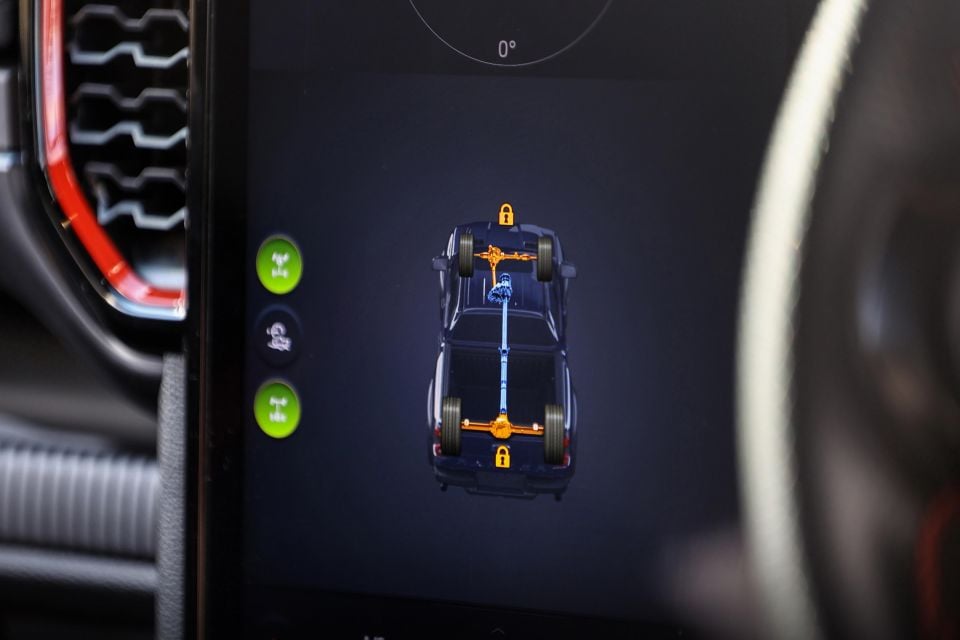
The first run was conducted in 4L low-range and Mud/Ruts driving mode, with the rear diff locker on.
The Raptor was purring up the slope until it hit some sketchy and slippery gravel, forcing Paul to roll down. Once on steadier ground he engaged the front diff lock as well and this time it cruised up. The Raptor is one of only two vehicles here with a locking front diff, and the only one that needed it. Hmm…
The downhill was made easier by the sharp front-view camera, which removes some nerves when you’re cresting and can’t see over the bonnet. Hill-descent control (with adjustable speed) was quiet and comforting, and lets you adjust the speed at which it descends.
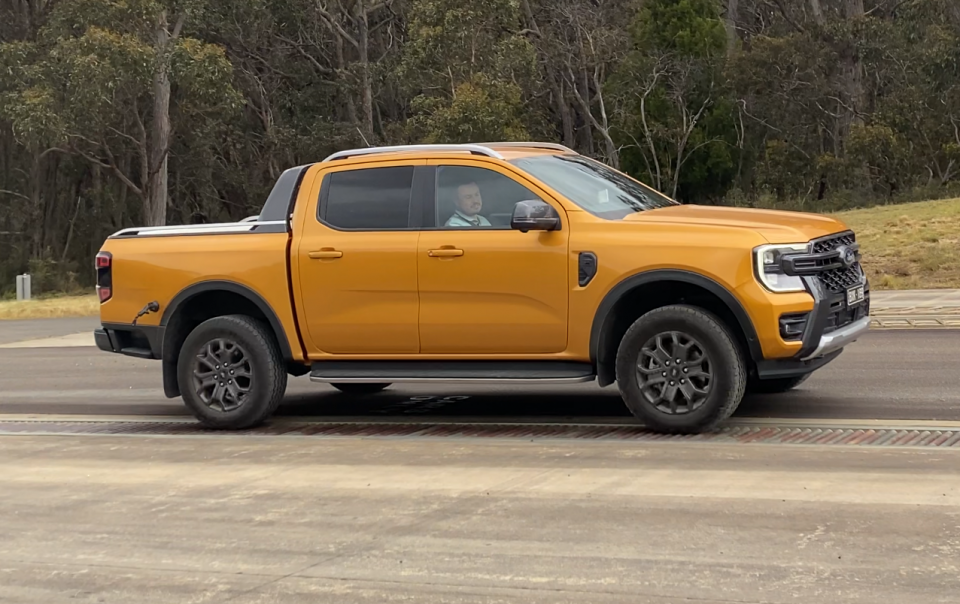
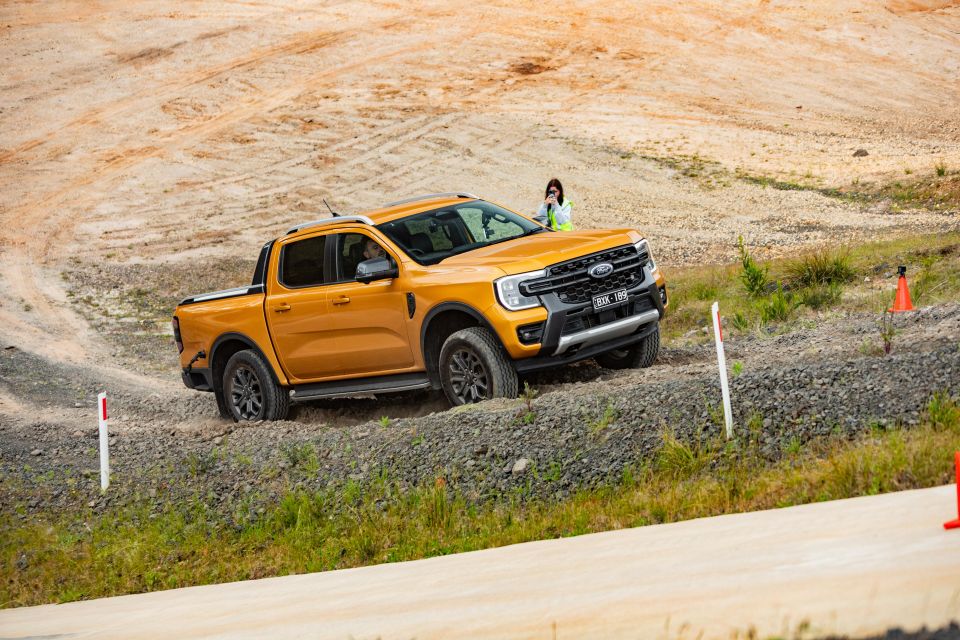
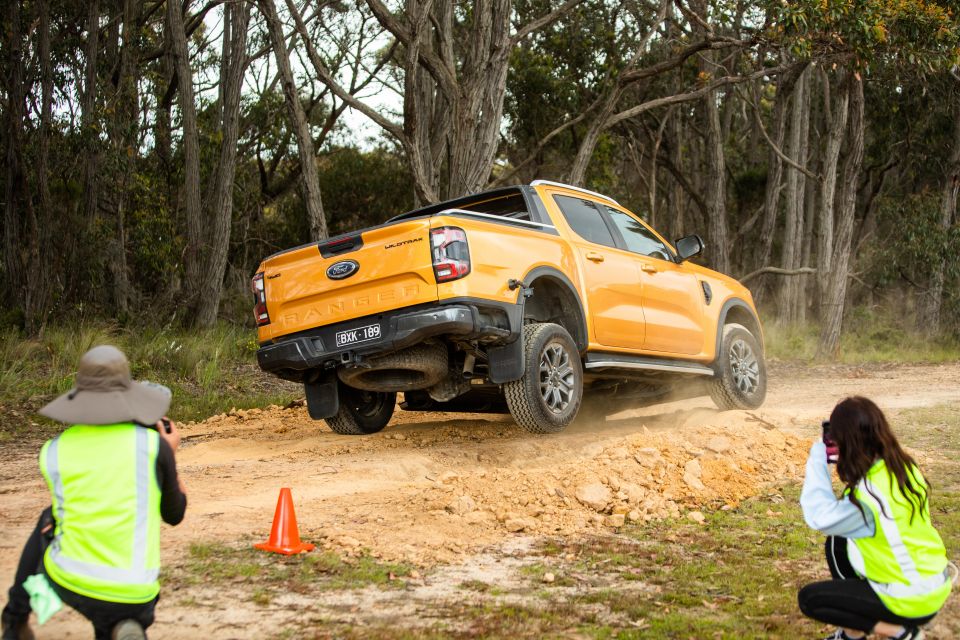
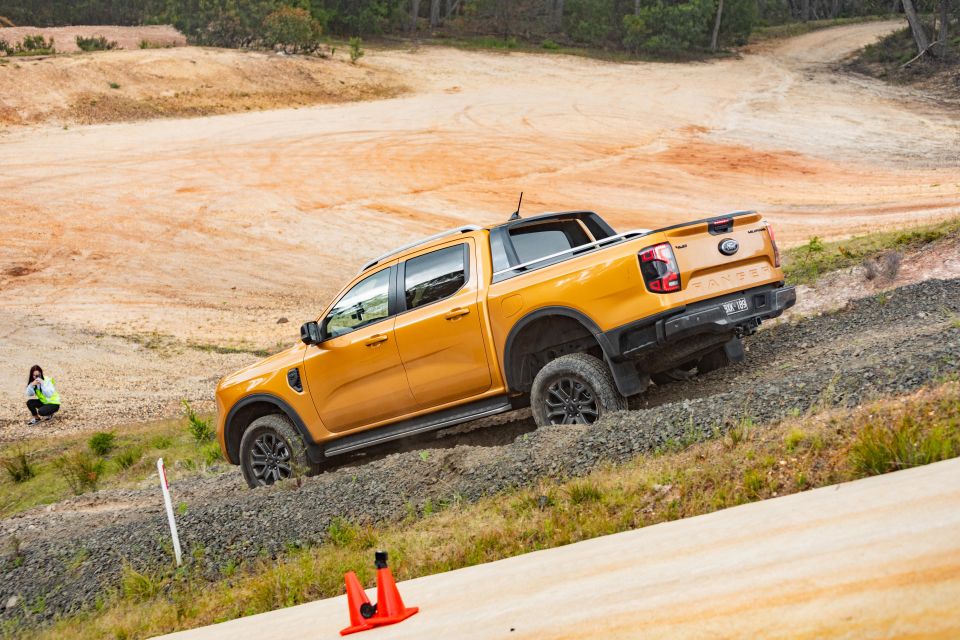
The Ranger Wildtrak again had no real issues on the rollers, rolling back a smidgen more in 2WD than AWD, but in both cases quickly snapping into forward momentum.
It also proved fine over the flex test, and in 4A mode clambered out of the offset moguls from a stationary start within four seconds.
At the bottom of the hill Paul selected Mud/Ruts mode, which allows a degree of wheel slippage without traction control intrusions, and had low-range and the rear diff lock engaged.

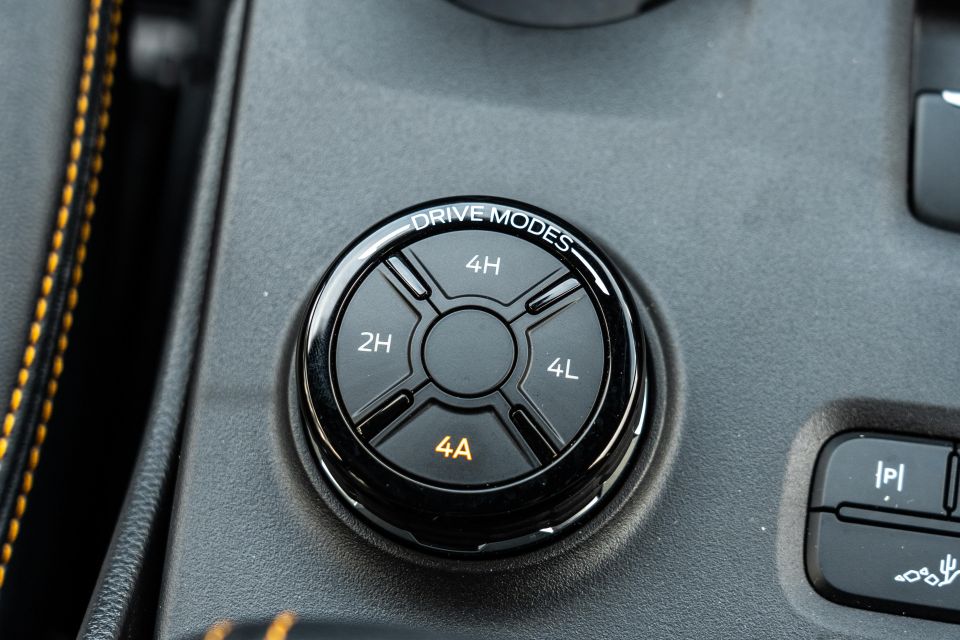
The Ford comes with a wide range of these terrain modes which control power delivery, shift timing, stability control, and traction control systems to better suit a given surface type.
It wasn’t a cakewalk but the Wildtrak did eventually make it up, which makes the Raptor’s performance all the stranger – slightly different line perhaps?
The Ford’s screen shows driveline and diff lock settings, steering angle, and the vehicle pitch and roll angles, and the camera views are expansive. As with the Raptor, the hill-descent control worked as advertised.
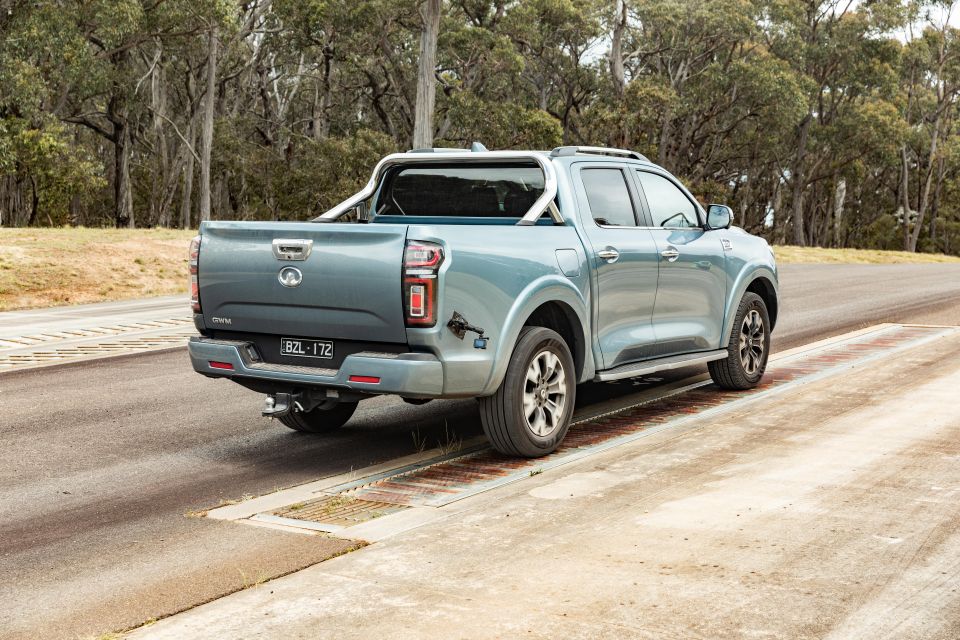
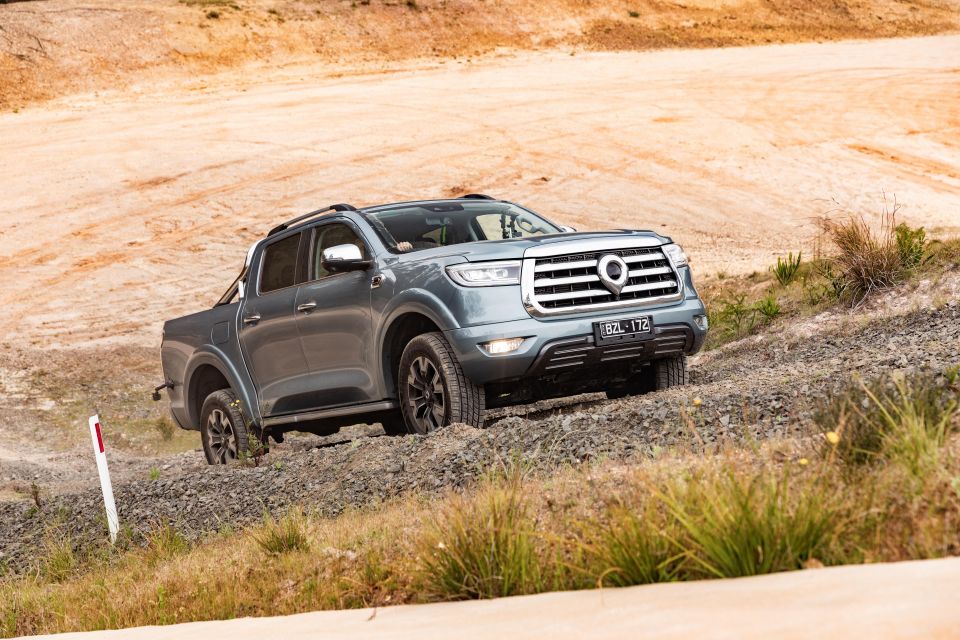

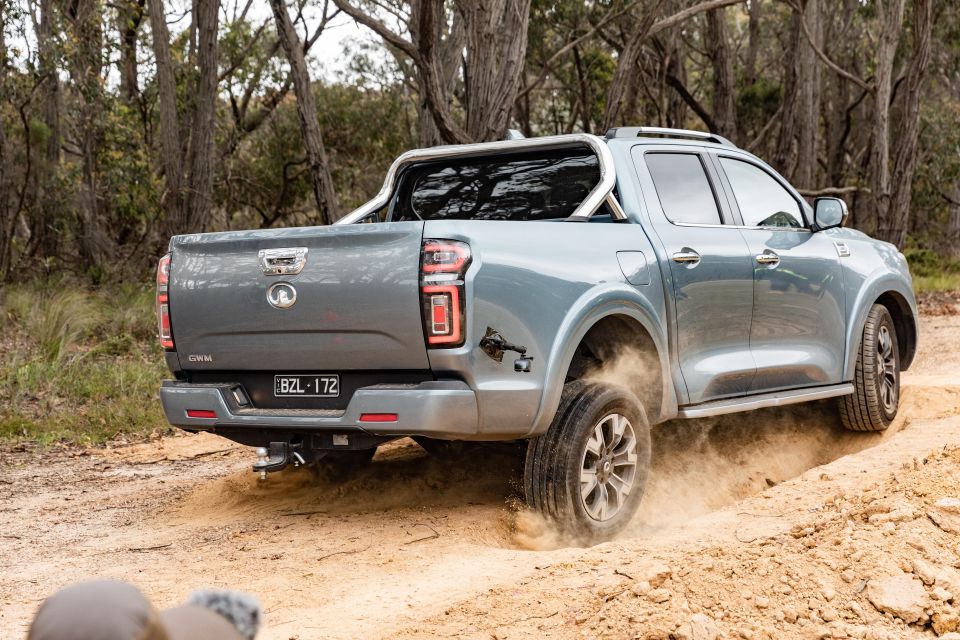
The GWM must be driven in its Eco mode to engage rear-drive, which we duly engaged for step one on the rollers.
The result? It rolled back, back, back, and didn’t jolt forwards until the rear wheels touched solid tarmac, at which point they got some purchase. Fail.
What about in on-demand 4WD? Watch in the video for both right-hand-side wheels spinning at the same time, showing the system’s functionality. Once again it had to make contact with solid ground to pick up and move forwards, for a second fail. This traction control needs work.

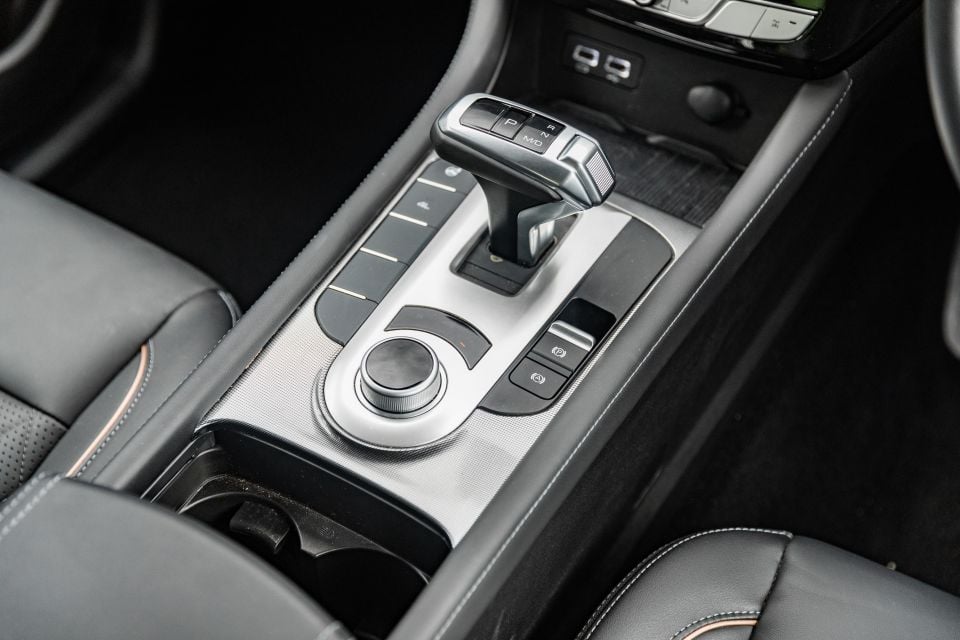
On the plus side the Chinese entrant did well on the flex test, showing acceptable degrees of chassis rigidity. But when we went to take off from within the offset mogul, in 4A mode, it merely spun its wheels and went nowhere, before overheating the 4WD system.
It required us, therefore, to lock the rear diff which forced more torque to the rear-left tyre, thereby helping push it out of a bind – and only after cooling down. So if you were stuck somewhere it would get you out, but required more intervention than the others so far.
It made a decent fist of clambering up Gravel Mountain in low-range with the rear diff locked, but ran out of traction about three-quarters of the way up. On the way down the hill-descent control was actually impressively confidence-inspiring, and the camera helpful.

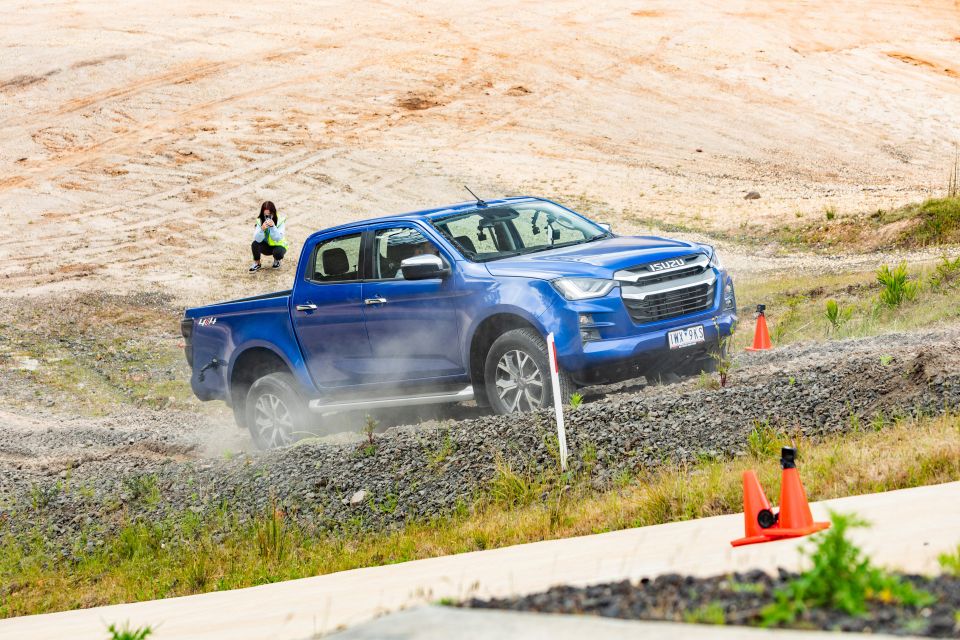
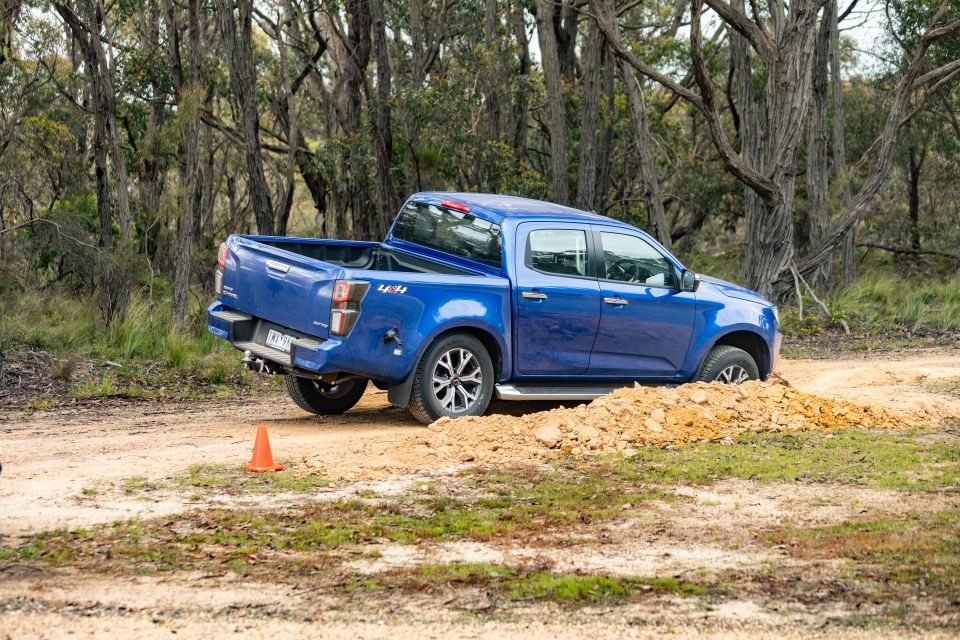
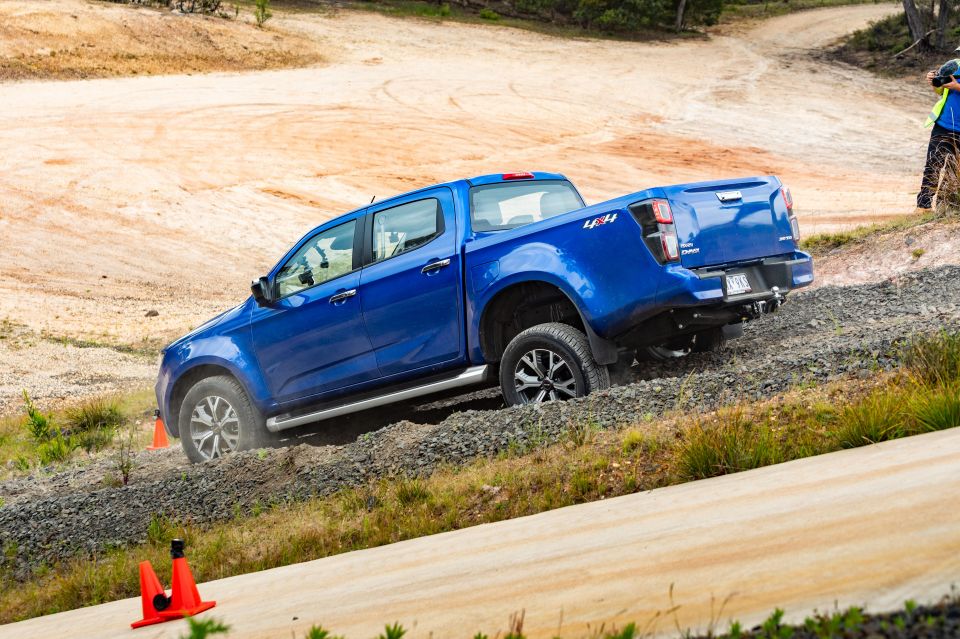
Where expert car reviews meet expert car buying – CarExpert gives you trusted advice, personalised service and real savings on your next new car.
The updated D-Max LS-U+ didn’t fare well on the rollers in 2H, sliding back to the end of the rollers before getting purchase on solid ground.
However, in 50:50 4×4 split (4H) it only rolled back briefly before the two left-hand side tyres were able to make enough road contact to pull it out. Pass here.
It did absolutely fine over the chassis flex test. Upon re-application of the accelerator with diagonally opposed tyres airborne, it took about 10 seconds to pull itself out – longer than some here. That traction control again…
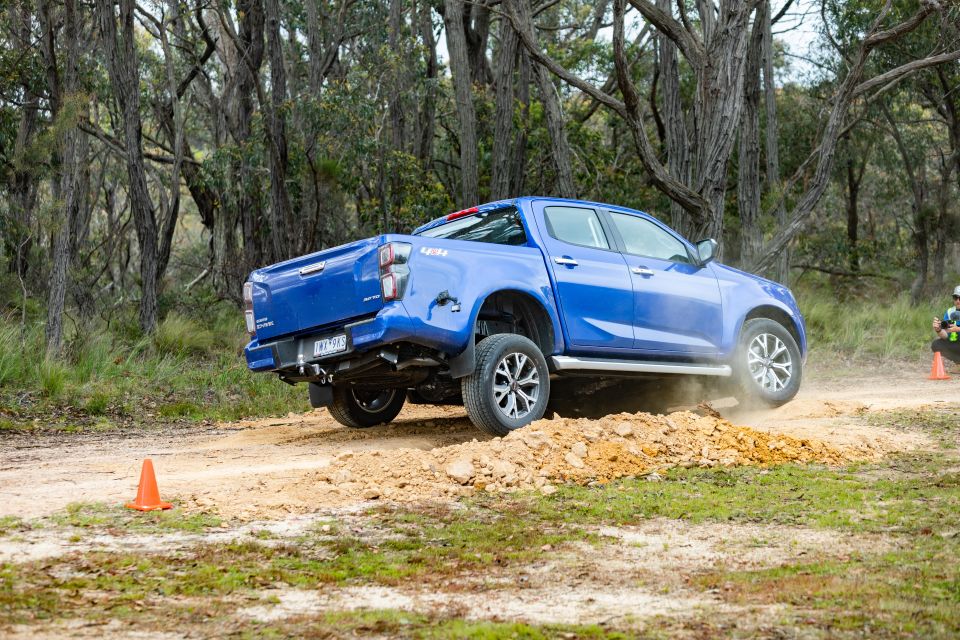
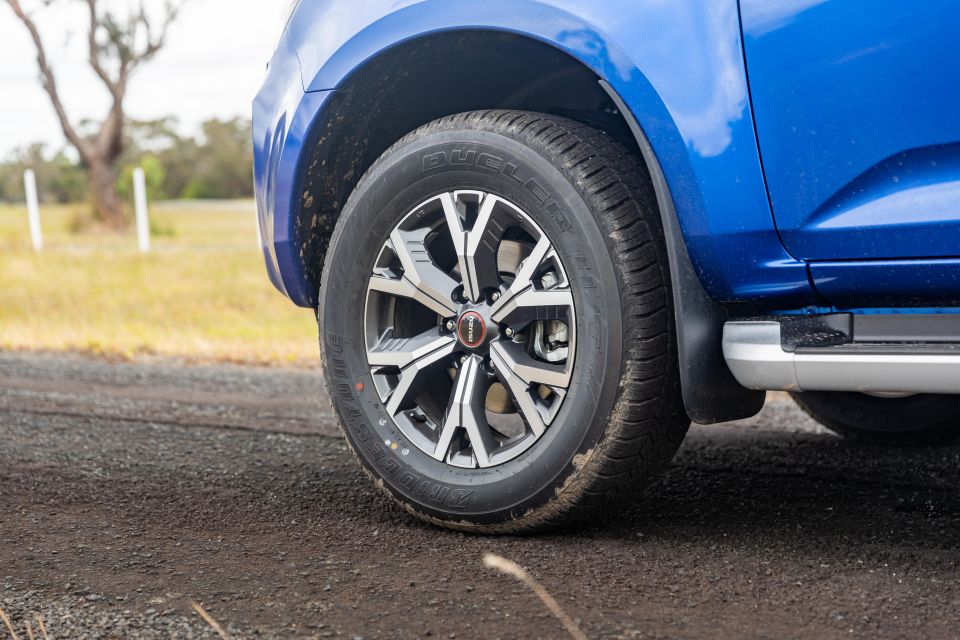
Once at the bottom of Gravel Mountain we engaged low-range (4L) and the rear diff lock, and perhaps surprisingly only clambered a short way up before losing traction and needing to be backed down. It’s not the sole ute here on highway tyres.
Paul also wasn’t blown away by the hill-descent control, and had to take over braking on the descent.
In short, he said the hardware is good but the software needs improving. Perhaps a bit disappointing.

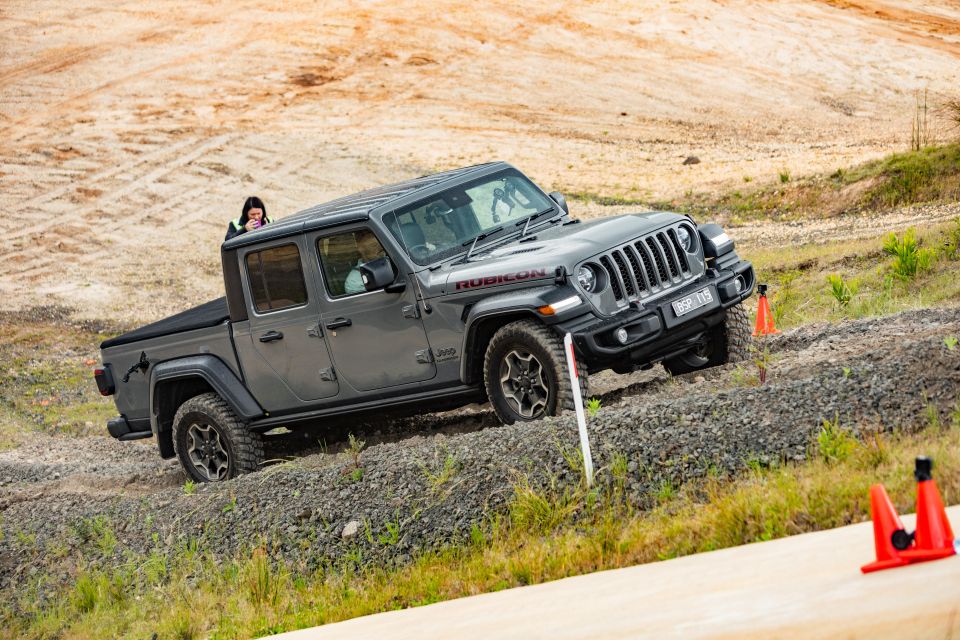
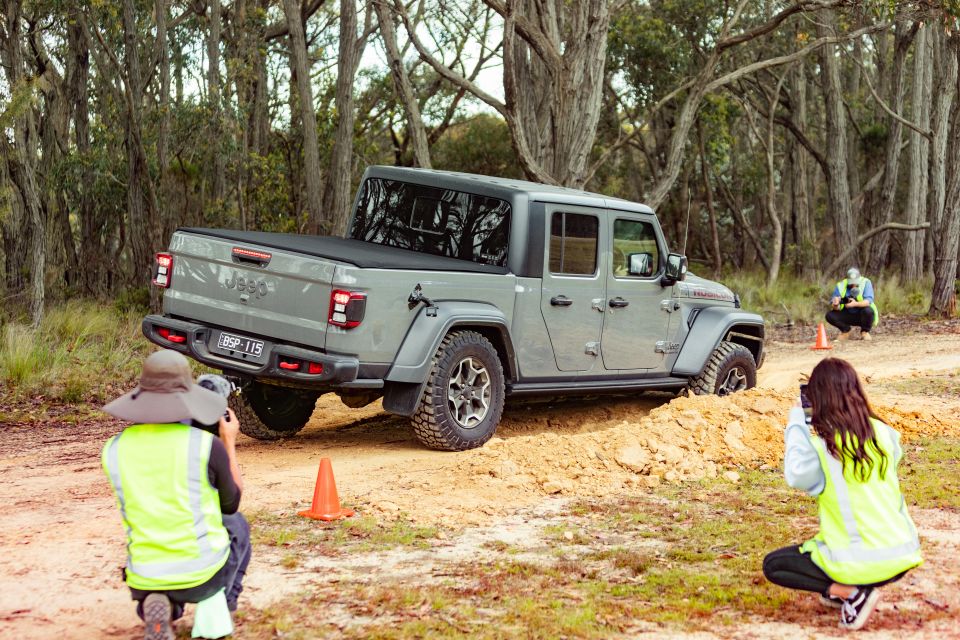
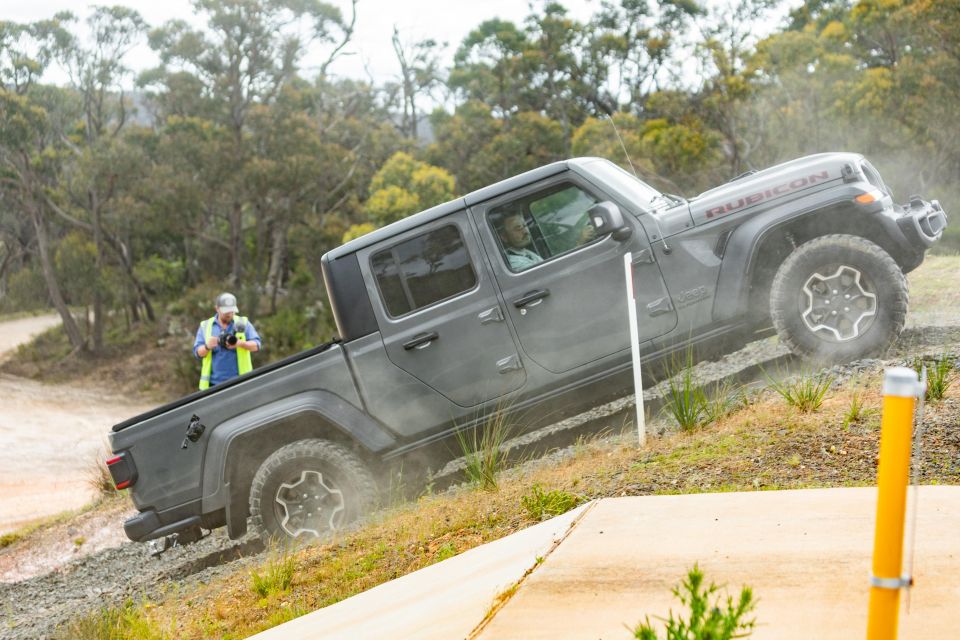
If there’s any ute here specifically designed for off-roading it’s the Jeep Gladiator Rubicon.
This comes with a spec sheet that includes heavy duty Dana axles, locking front and rear diffs, a 4:1 low-gear ratio, all-terrain tyres, and even a disconnecting front sway bar for maximum articulation.
It wasn’t super impressive on the rollers, sliding backwards a bit in 2H before just catching and pulling itself out before the end. But it made it. It was far better in 4-Auto, pulling up the slippery slope almost immediately.

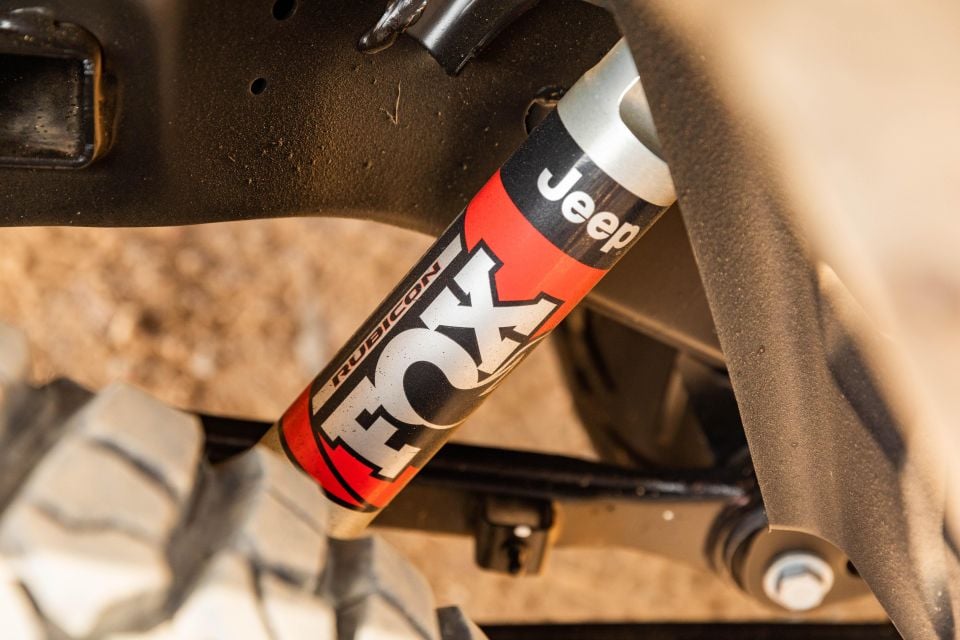
It passed the flex test and when dropping into the offset moguls showed off how good its axles are at dropping into holes, which enabled it to easily clamber out.
It actually walked up Gravel Mountain in low-range with just the rear diffs locked. Naturally Paul made another run with the front diff locked and sway bar detached, as well as the Off Road Plus traction control mode just for fun, as you can watch.
“Next level stuff,” he said.

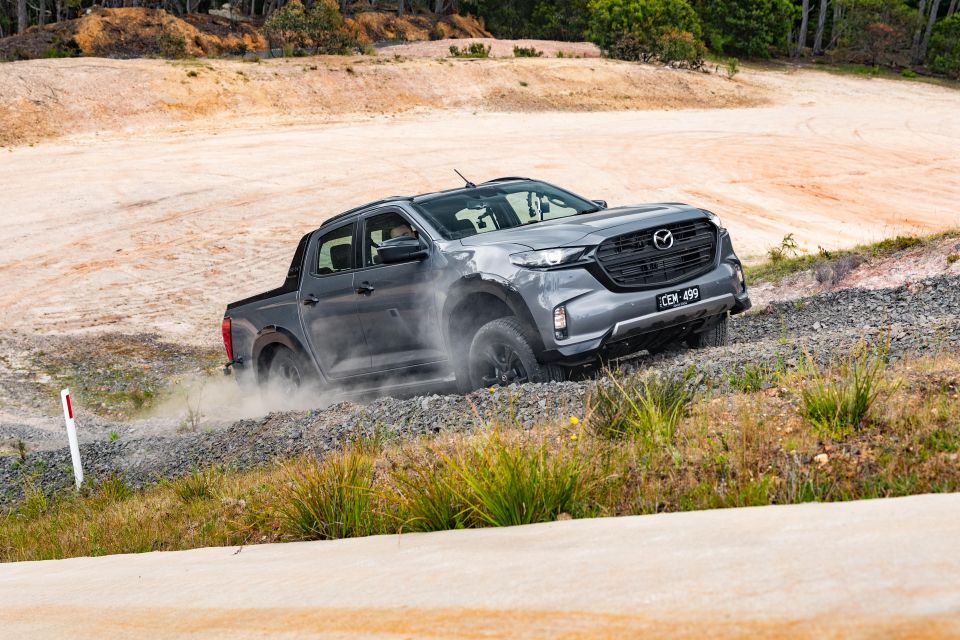

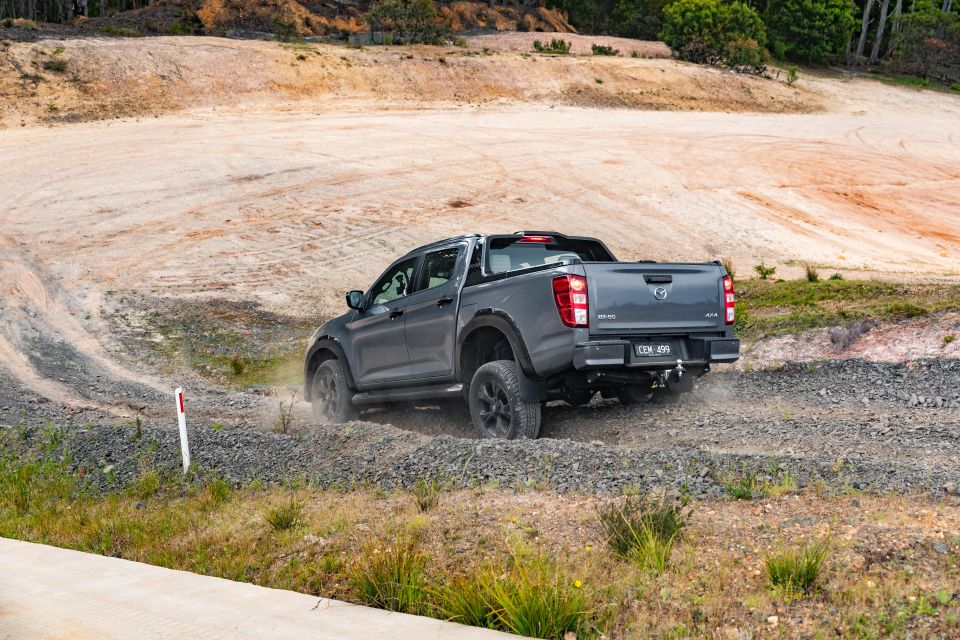
You can pretty much copy and paste the D-Max’s off-road performance, for obvious reasons – they’re the same car.
We’re driving the BT-50 in a slightly more luxurious spec grade (SP versus Isuzu D-Max LS-U+) but the drivelines, suspension, traction control and 4×4 systems all match.
As expected the Mazda did just as poorly in 2H on the rollers as the Isuzu, sliding all the way back to solid ground, but likewise managed to pass once 4H was engaged. “I don’t love this traction control system,” said Paul, calling it the weak point.
It took about 10 seconds to pull itself out of the offset moguls after passing the flex test, but it did take quite some time to figure things out.
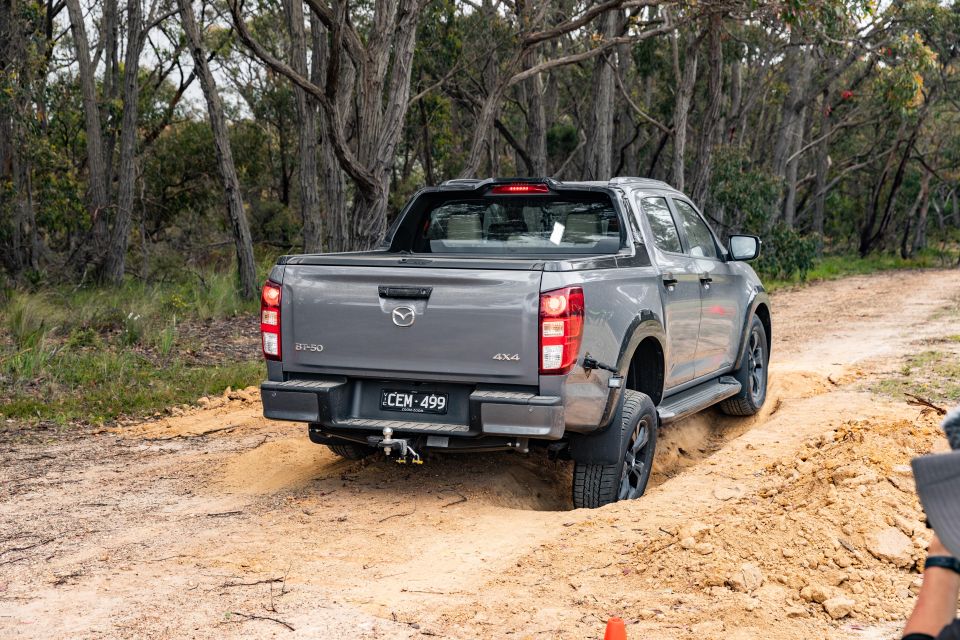
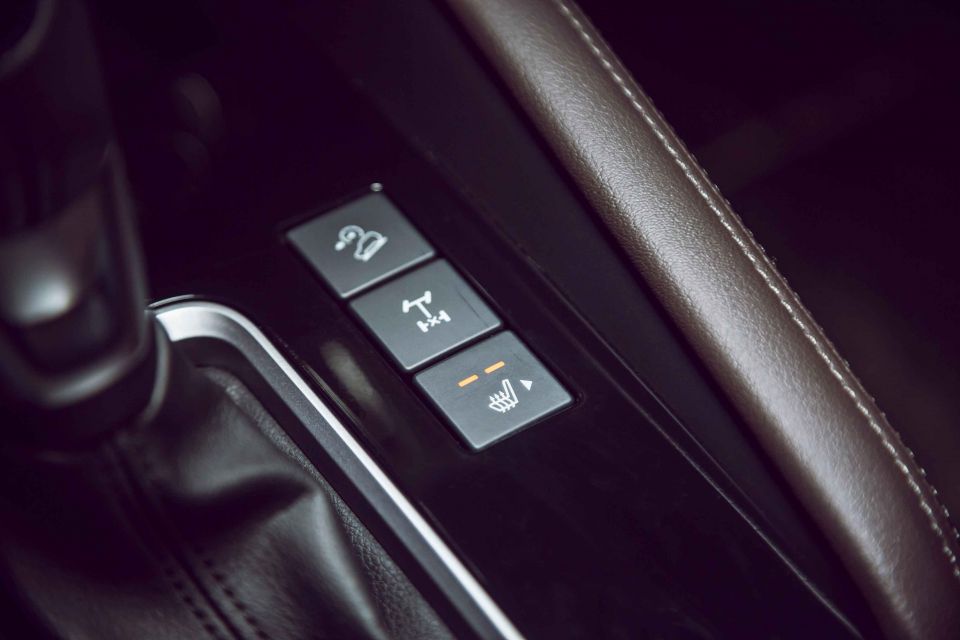
The Mazda made it up further up the hill climb (4L with rear diff locked) than the Isuzu, but failed overall – a hint more momentum or a slightly different line of attack can make a difference, but in this case not enough.
Its hill-descent control system was also “way too fast” said Paul, after the vehicle started heading downhill at a clip.
One interesting difference between the Mazda and Isuzu is the former’s accessories catalogue, which include an ARB suspension upgrade with new front coils and rear leafs, and better dampers. That’s convenient.
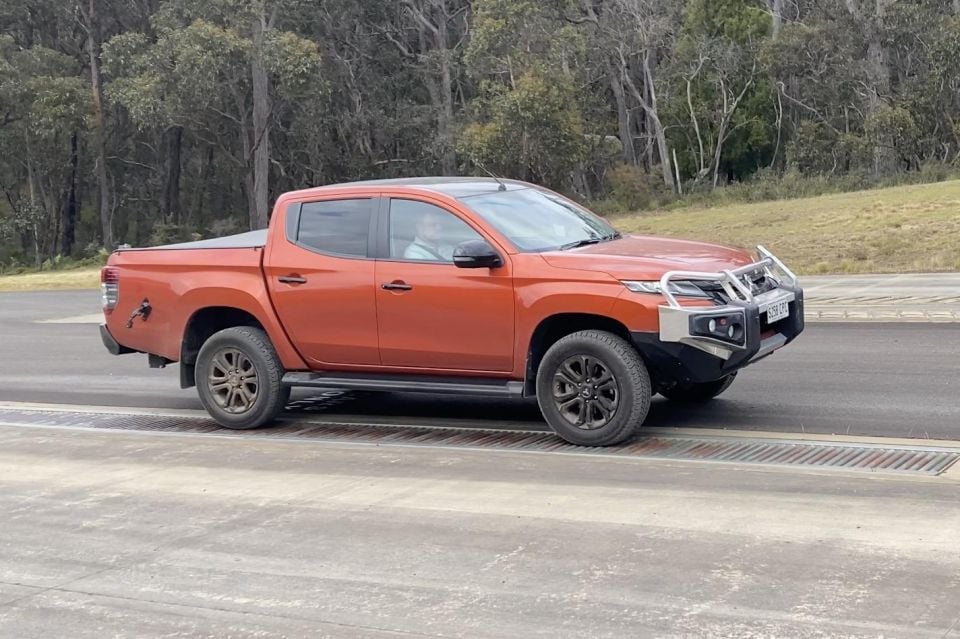
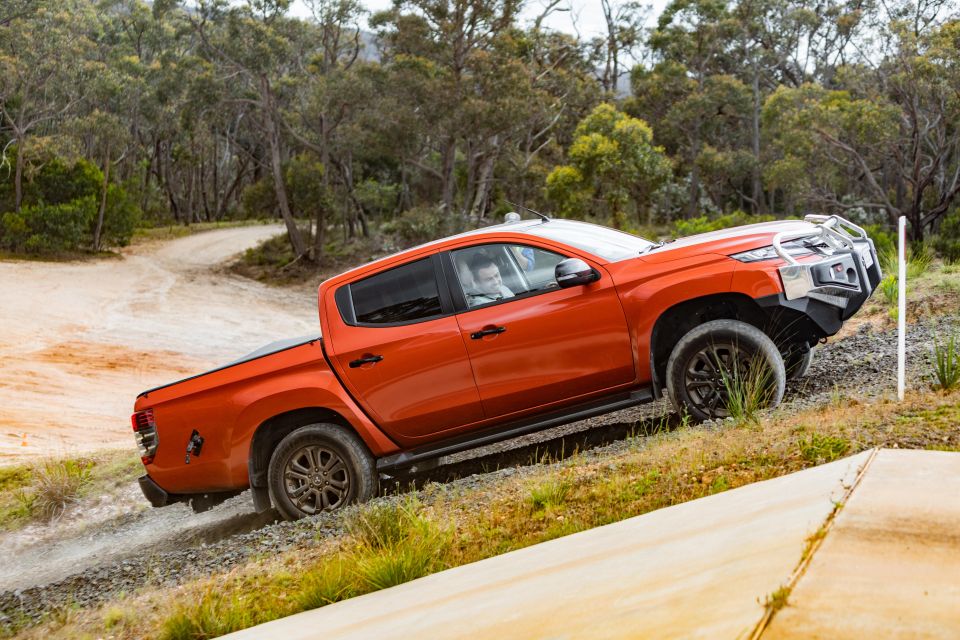
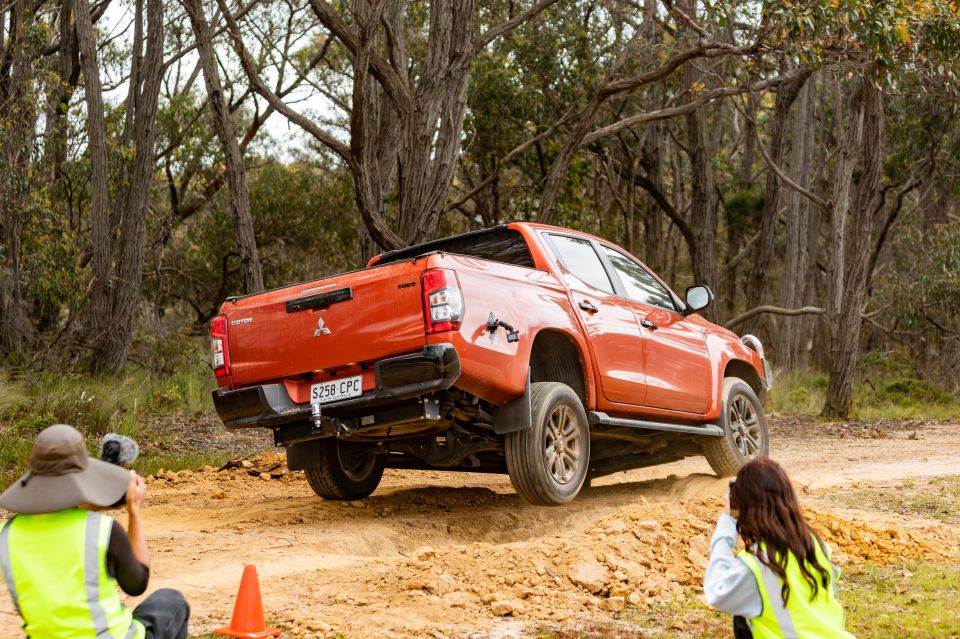
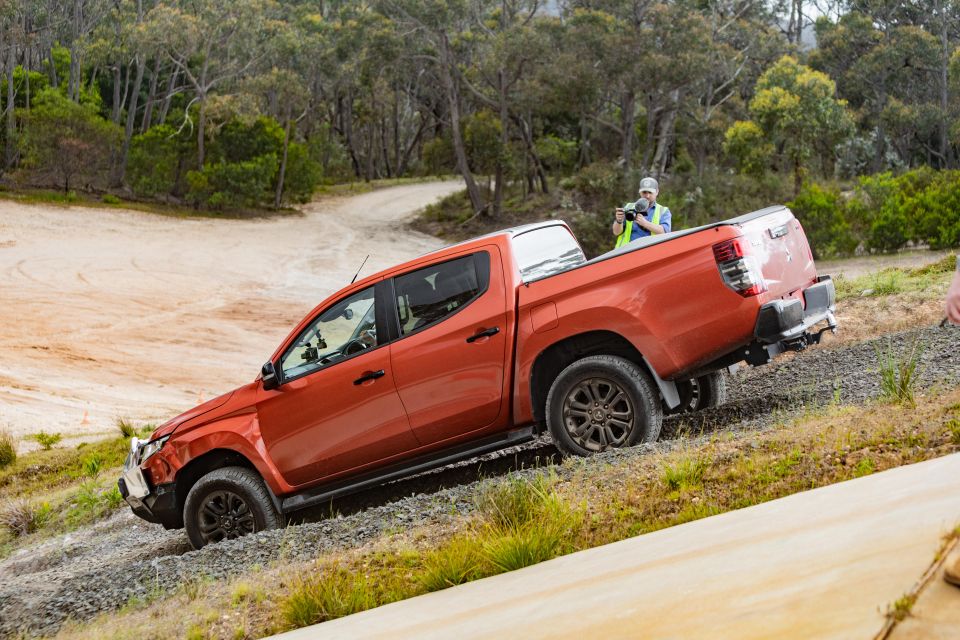
Can anything frighten the Triton? Well, our tests sure didn’t.
Before we start let’s just flag the obvious damage to the front-left fender, caused by a person running into the Mitsubishi when parked. We had it checked and it was driveable, with no wheel-alignment issue.
Its traction control picked up well on the rollers in both 2H and 4H modes – the latter of which keeps the centre diff open to function on tarmac. There’s also a 4HLc mode that fixes the front-to-rear torque split.
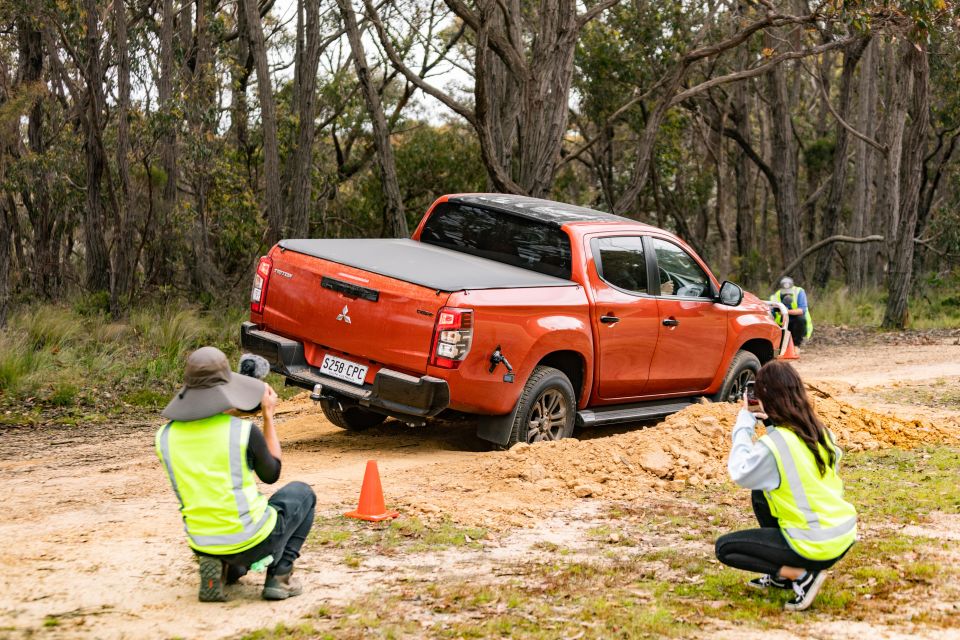
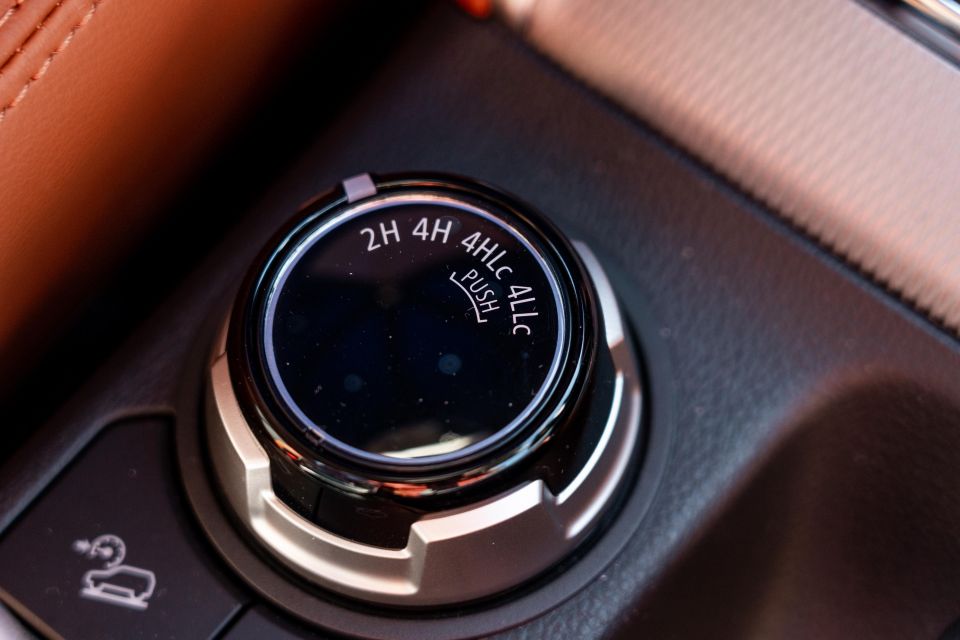
It passed the flex test and clambered out of the moguls in 4H pretty quickly, though we’d note the long rear overhang which limits the departure angle – a result of the small wheelbase and subsequent tight turning circle.
Be sure to watch the video of the Triton clambering up Gravel Mountain in low-range with its rear diff locked. It’s not the punchiest or highest-tech ute here, but it absolutely bolted up nevertheless in remarkably good fashion.
Ditto the hill-descent control function which was confidence-inspiring in tandem with 4L. This almost sounds like a Triton ad, doesn’t it? Big, big tick.
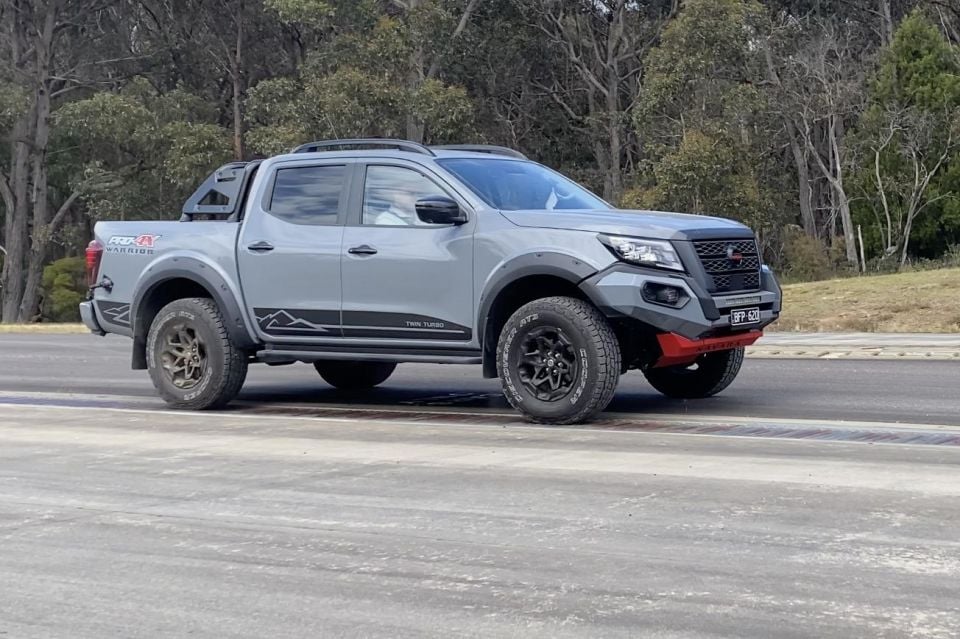
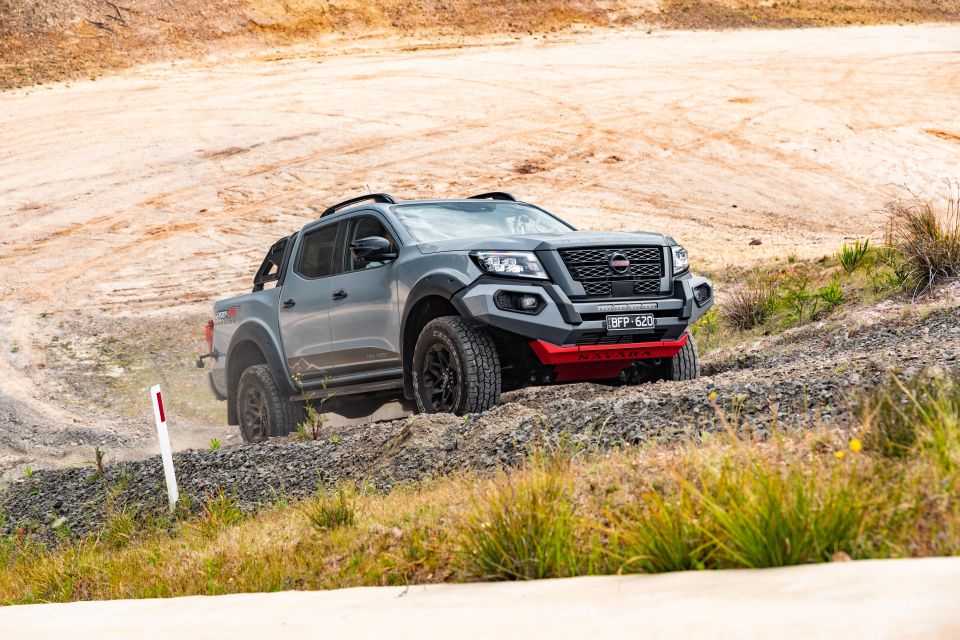
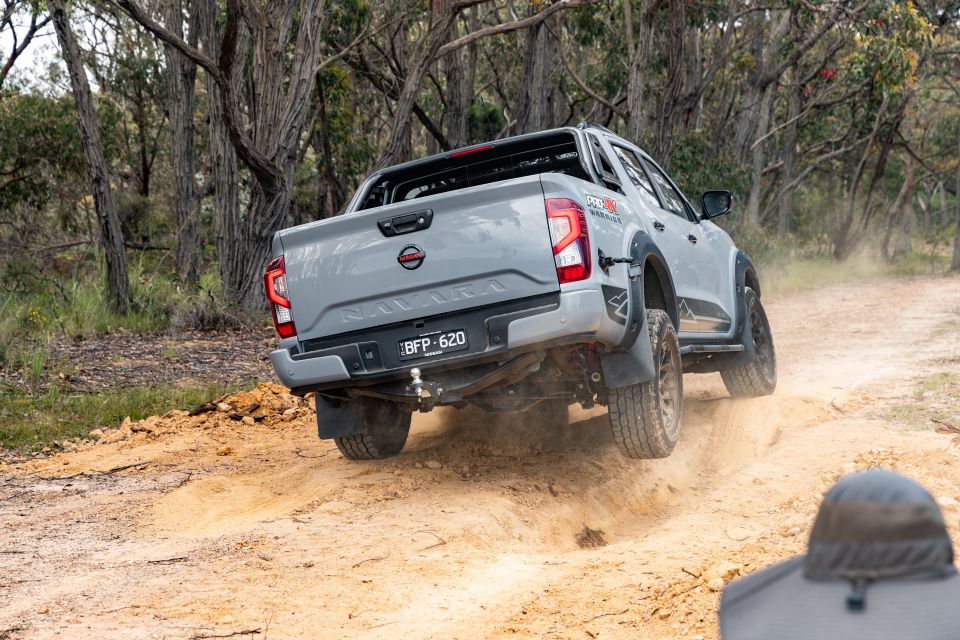
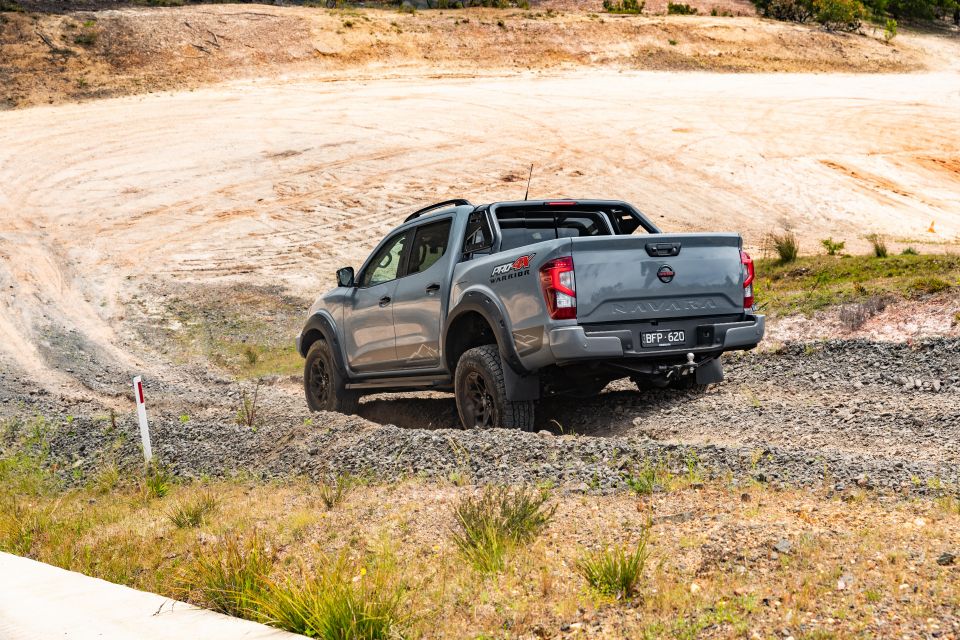
If there’s one thing this Navara should be amazing at, it’s off-roading. This Pro-4X Warrior is engineered in Australia with extra protection, a suspension lift, and chunky Cooper Discoverer tyres among other additions.
Credit where it’s due, it looks bloody tough. It also waltzed up the rollers pretty easily in 2H and 4H.
Likewise it passed the chassis flex test, and pulled itself out of the offset moguls in about seven seconds, with those chunky tyres no doubt playing a role.
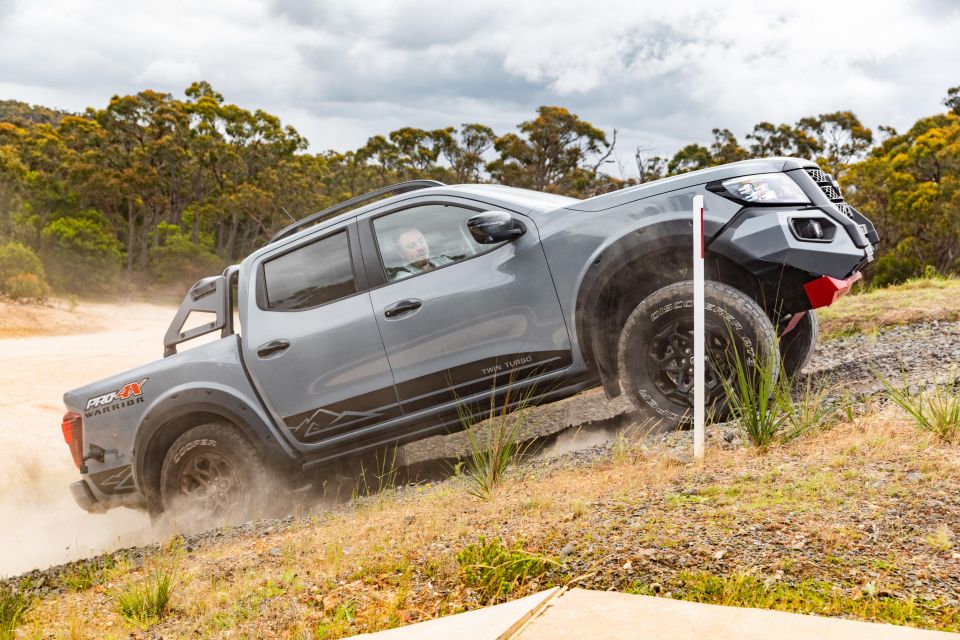
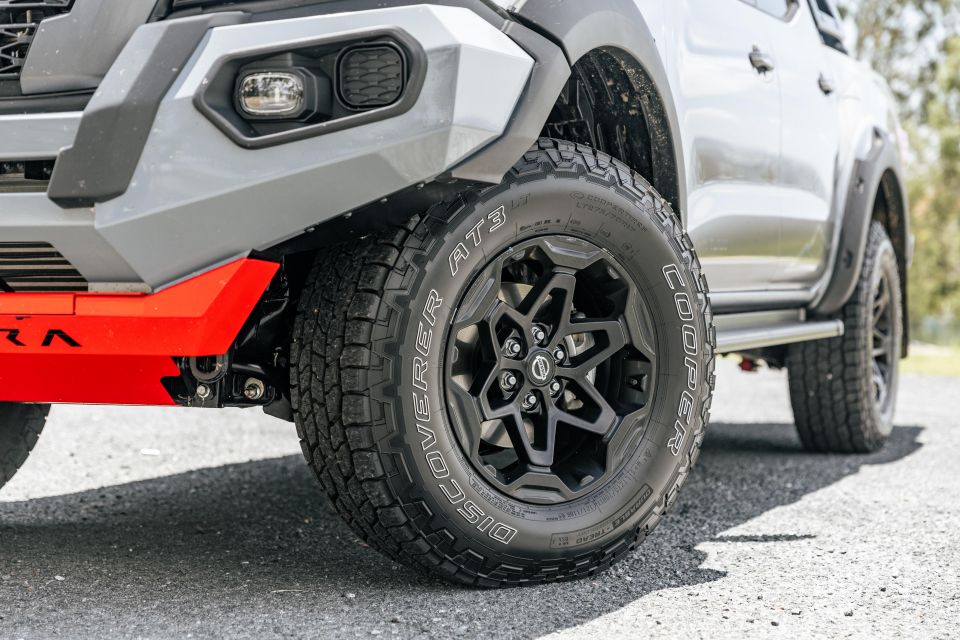
The Navara runs a part-time 4×4 system, and with low-range and the rear diff lock engaged it made it up Gravel Mountain – something several rivals failed to do.
In hindsight we should have kept it in gear manually, because it tried to change gears mid-way up, which hindered momentum.
The hill-descent control worked well, allowing you to crawl slowly down with feet off the pedals. Just don’t rely on the low-resolution camera.
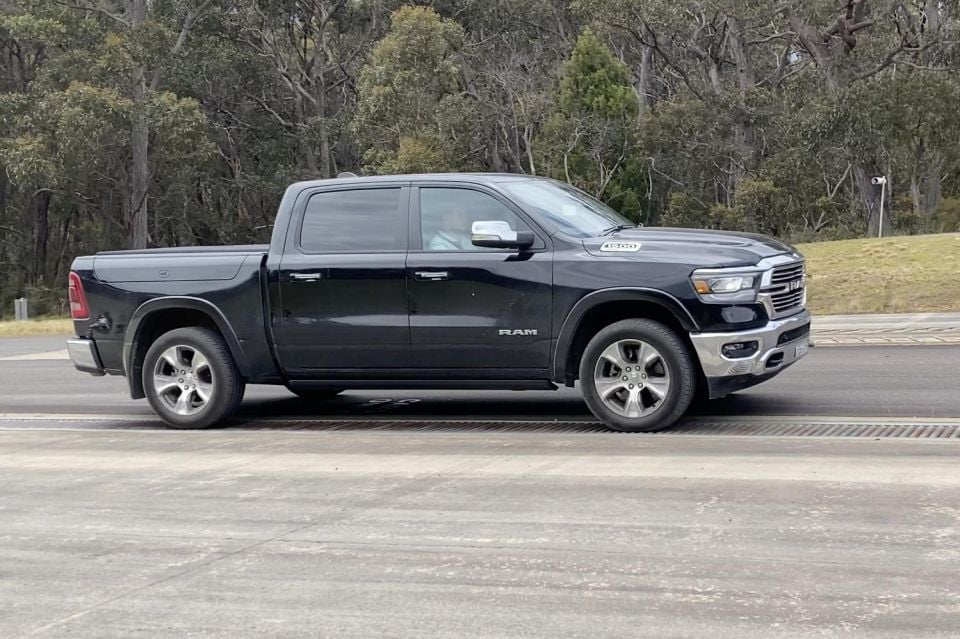
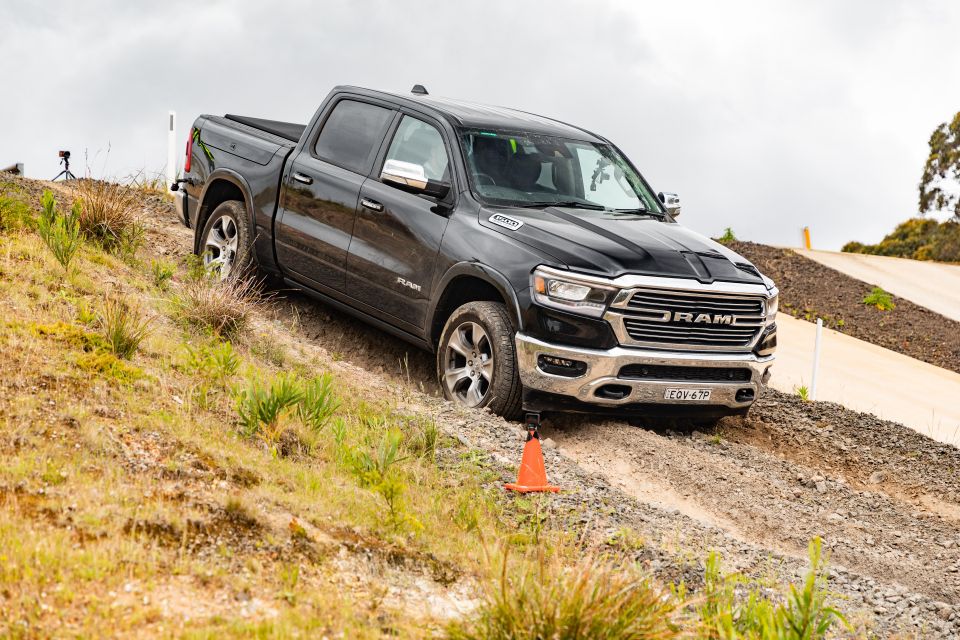

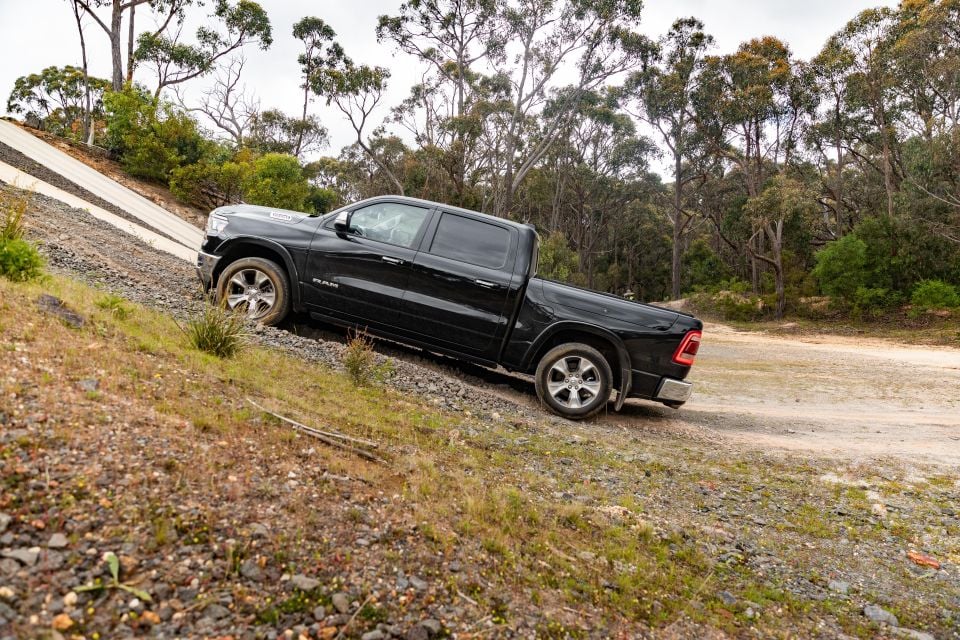
As Paul points out in the video, the Ram 1500 uses a (seemingly lockable) limited-slip rear diff rather than a manually-locking one. In 2H it rolled back a fair bit before moving forwards, though technically passed.
It was much more capable and decisive in its 4WD Auto mode.
The first challenge over the moguls was to shut off the auto-deploying electronic side steps (when you open the doors) ahead of our flex test, through the touchscreen. There were no signs of chassis flex.
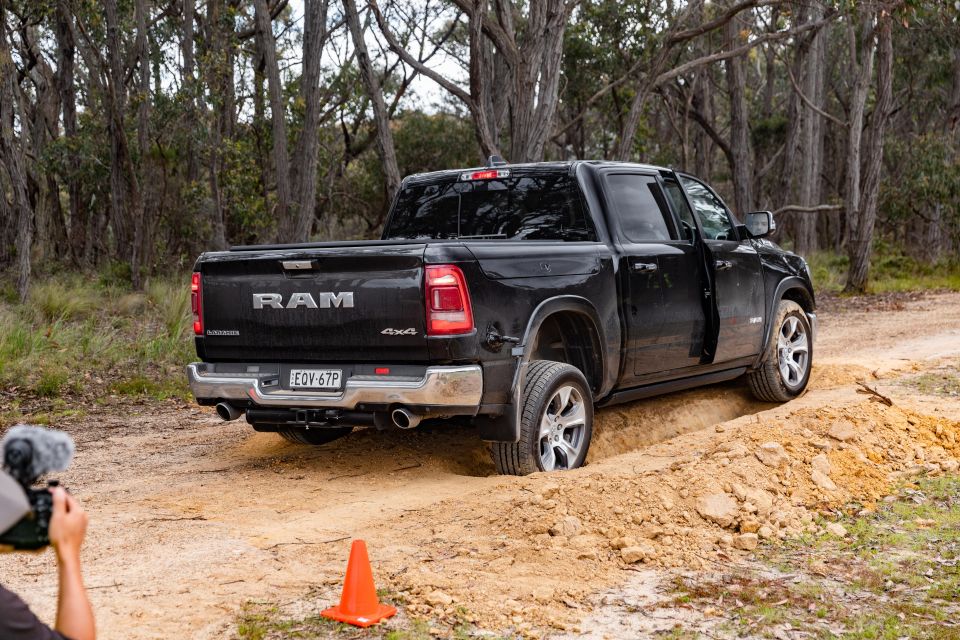
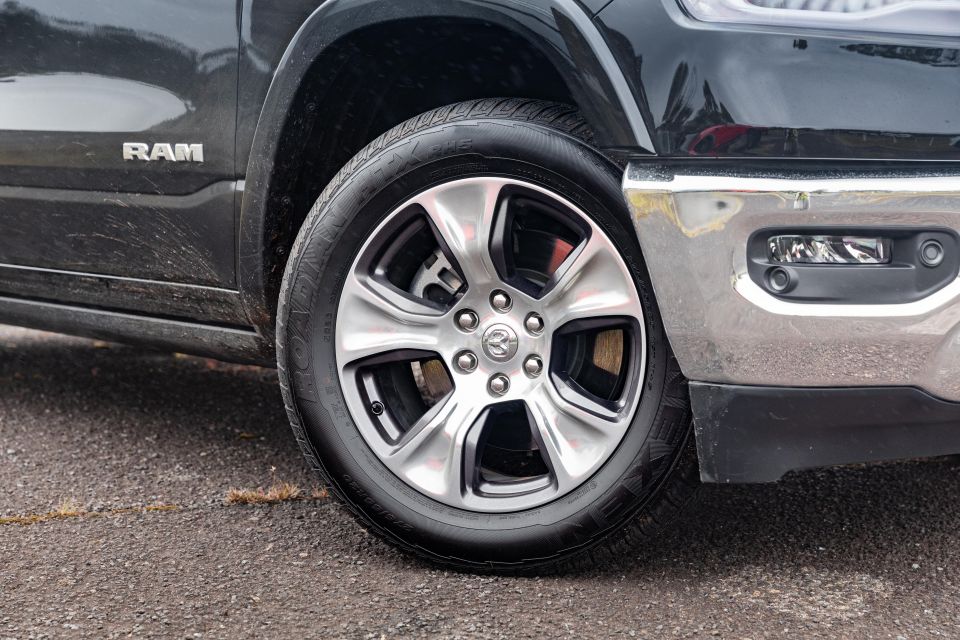
The rear LSD and 4A systems were capable when it came to clambering out of the moguls – you can watch the rear-left tyre pulse slightly as the big beast rolls out.
Even with road tyres and no conventional locking diff it clambered up Gravel Mountain with ease, perhaps a result of its V8 torque and perhaps due to its sheer mass reducing wheel spin.
There’s no hill-descent control, Paul had to come down in first and low-range, and noted the front plastic section below the bumper scraping against the trail.
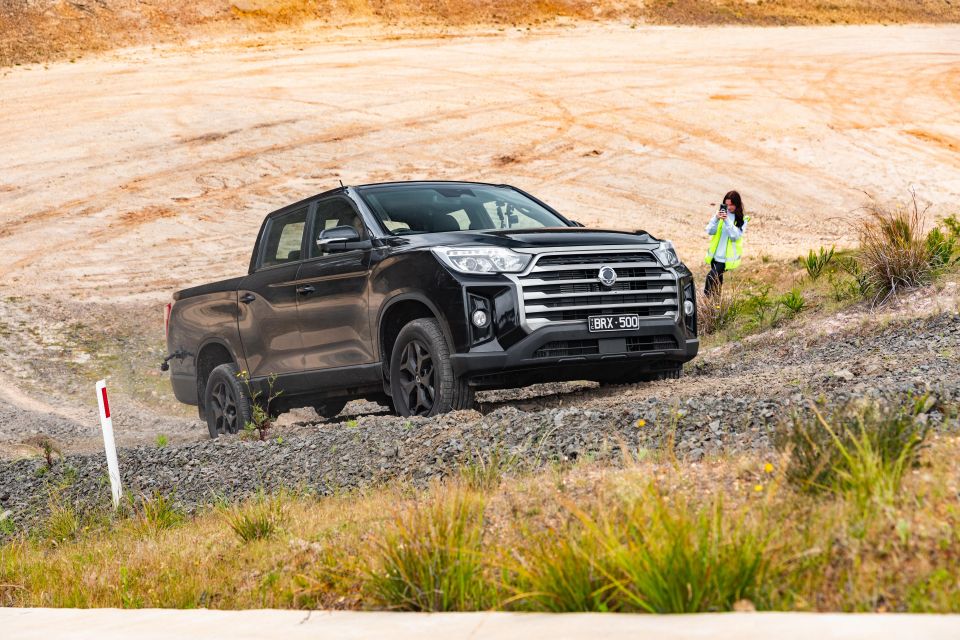
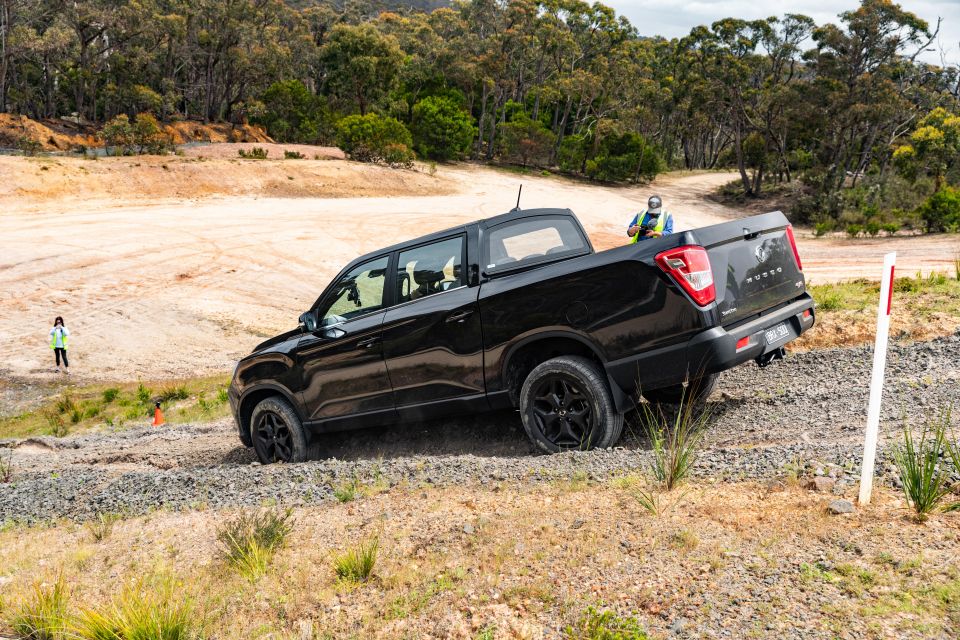

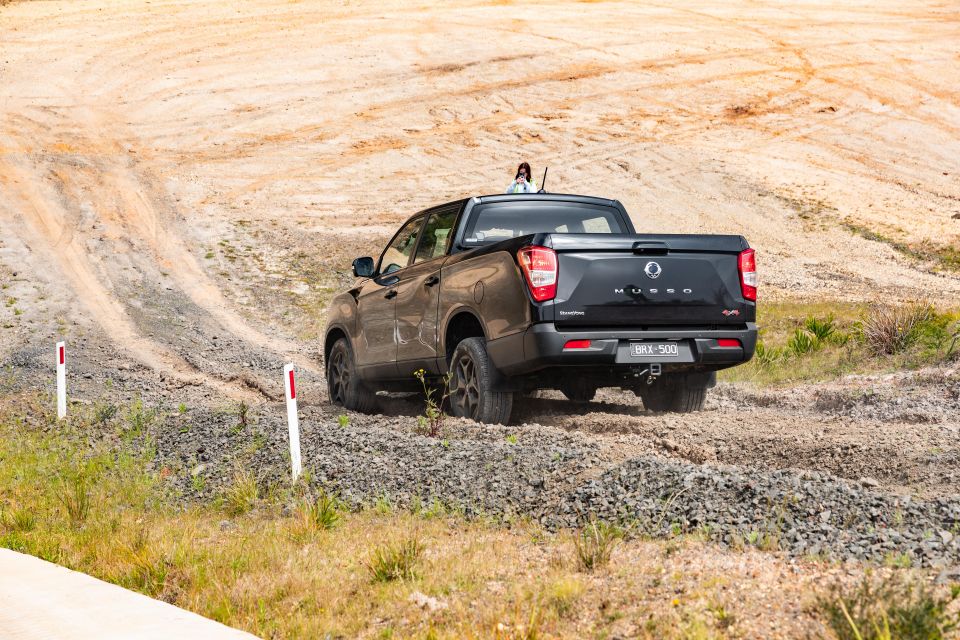
The Musso XLV on test was fitted with the optional lime green ironman suspension upgrade.
Like the Chevy Silverado the Korean eschews a manually-engaging rear diff lock, in favour of a self-locking unit that senses rotational slip.
The truth is, while we’d like the ability to control it ourselves, it works well – if a little abruptly. Just watch it slam into action and send the Musso chirping up the rollers, in 2H and 4H alike.
It worked similarly on the offset moguls, kicking the rear out when pushing the Musso out of its predicament. “Very effective,” said Paul. Just not subtle – “Give me a button”.

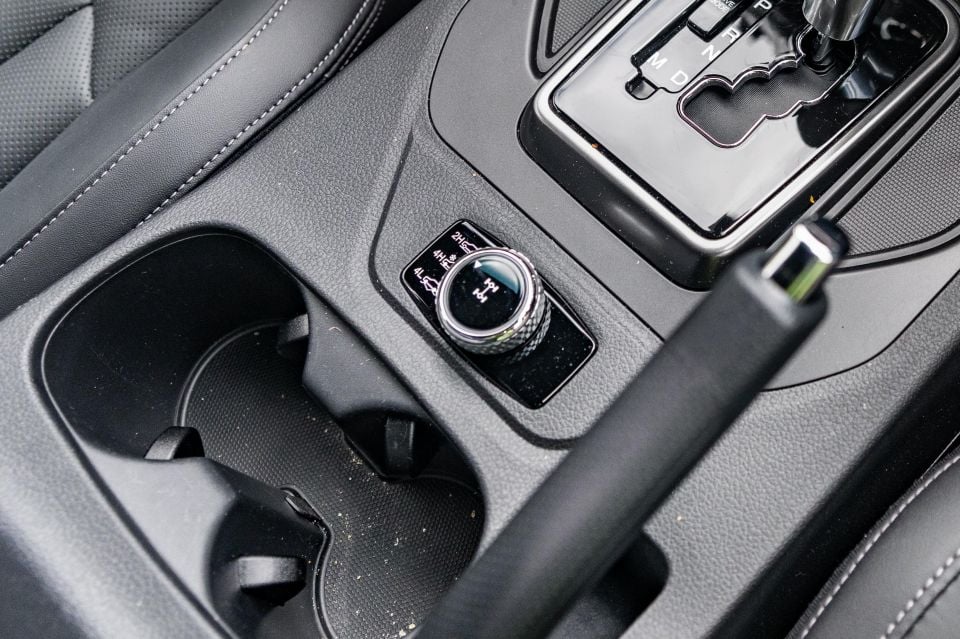
Note this was the only vehicle on test that did not pass the flex test, with the driver’s door catching a little.
The Musso made an ok effort at Gravel Mountain in 4L with the auto-locker ready, battling and squirming about three-quarters the way up before losing traction. Paul didn’t rate the downhill-descent control having to take over and commandeer the brakes, nor the tyres.
The hill-descent control also failed, with Paul forced to take over braking.
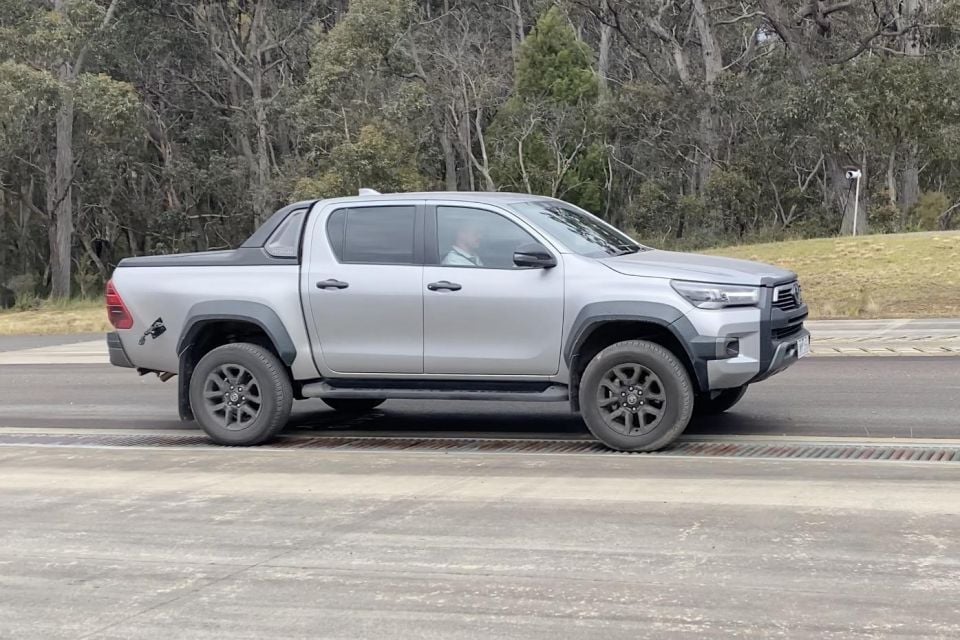
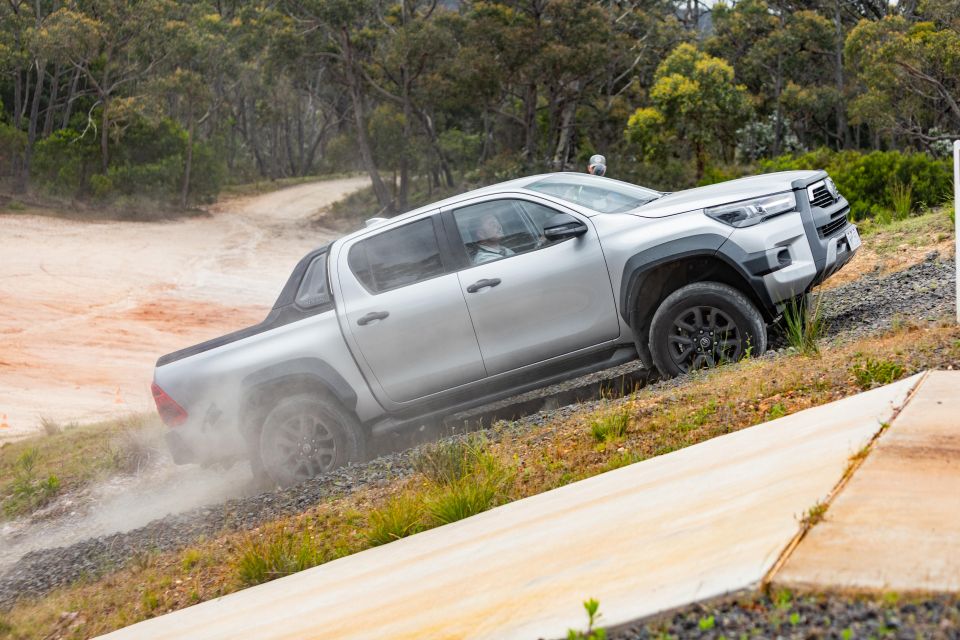


This HiLux Rogue is not your run-of-the-mill model, with modifications including a wider track and an additional 20mm of ride height from updated springs, new dampers, front and (new) rear stabilisers, and rear disc brakes in place of drums.
There are no driveline changes though, with the 4×4 system remaining part-time.
As Paul noted in the video, the HiLux was enjoying home-turf advantage, given Toyota Australia does a lot of its local engineering work at the same 4×4 facility as we used for this test.
There were few issues for the HiLux on the rollers in 2H or 4H, with its traction controls showing their efficacy.
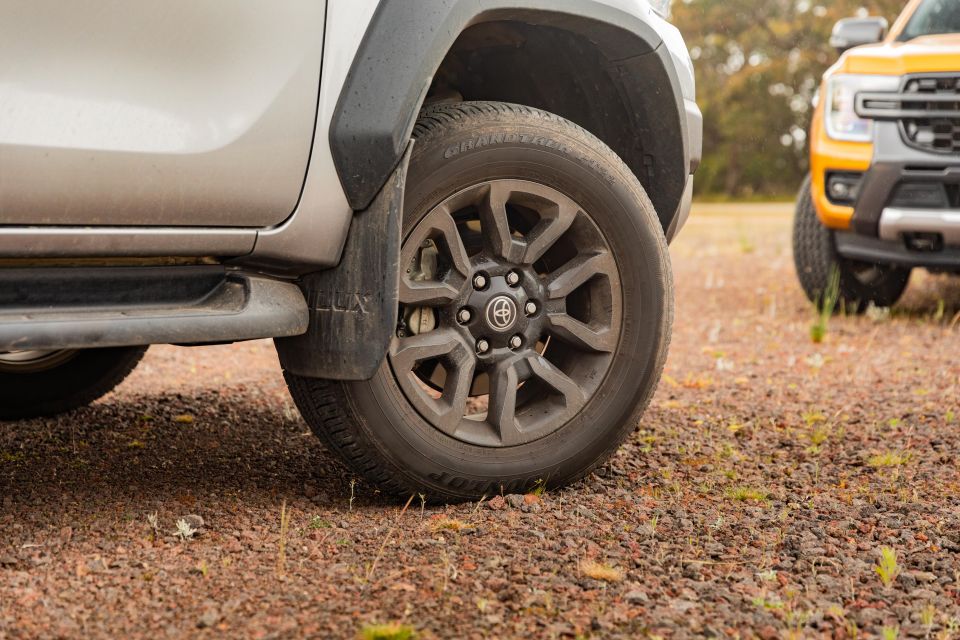

It passed the chassis flex test and smoothly pulled itself out of the offset moguls without much pointless wheel spin, helped no doubt by the bigger footprint. There’s still plenty of axle articulation too.
With a firm throttle it also clambered up Gravel Mountain, not as effortlessly as some but still effectively enough, in 4-Low with the rear diff locked.
On the way down the hill-descent control worked well enough, though like a few other utes here the surround-view camera resolution is no good.




The Jeep’s sole weakness is its sheer length, but otherwise it’s equipped to go anywhere thanks to features like sway bar disconnect, front and rear diff locks, a great low-range, and excellent over-bonnet visibility.
While the Navara Pro-4X Warrior battled in some of our other tests – published separately – in the off-road section all those Premcar-engineered enhancements really came into their own.


| Rollers in 2H | Rollers in 4H | Flex test | |
|---|---|---|---|
| Chevrolet Silverado LTZ Premium | Pass | Pass | Pass |
| Ford Ranger Raptor | Pass | Pass | Pass |
| Ford Ranger Wildtrak V6 | Pass | Pass | Pass |
| GWM Ute Cannon-X | Fail | Fail | Pass |
| Isuzu D-Max LS-U+ | Fail | Pass | Pass |
| Jeep Gladiator Rubicon | Pass | Pass | Pass |
| Mazda BT-50 SP | Fail | Pass | Pass |
| Mitsubishi Triton GSR | Pass | Pass | Pass |
| Nissan Navara Pro-4X Warrior | Pass | Pass | Pass |
| Ram 1500 Laramie | Pass | Pass | Pass |
| SsangYong Musso XLV Ultimate | Pass | Pass | Fail |
| Toyota HiLux Rogue | Pass | Pass | Pass |
| Mogul | Hill climb | Hill descent | |
|---|---|---|---|
| Chevrolet Silverado LTZ Premium | Pass | Pass | Pass |
| Ford Ranger Raptor | Pass | Pass* | Pass |
| Ford Ranger Wildtrak V6 | Pass | Pass | Pass |
| GWM Ute Cannon-X | Fail | Fail | Pass |
| Isuzu D-Max LS-U+ | Pass | Fail | Fail |
| Jeep Gladiator Rubicon | Pass | Pass | Pass |
| Mazda BT-50 SP | Pass | Fail | Fail |
| Mitsubishi Triton GSR | Pass | Pass | Pass |
| Nissan Navara Pro-4X Warrior | Pass | Pass | Pass |
| Ram 1500 Laramie | Pass | Pass | N/A |
| SsangYong Musso XLV Ultimate | Pass | Fail | Fail |
| Toyota HiLux Rogue | Pass | Pass | Pass |
*Denotes front diff engaged
Share your thoughts with us in the comments below!
Share your thoughts and write a review of a car you own and get featured on CarExpert.


Ben Zachariah
6 Hours Ago


CarExpert.com.au
14 Hours Ago


Damion Smy
1 Day Ago


Damion Smy
1 Day Ago


Damion Smy
1 Day Ago


Damion Smy
1 Day Ago